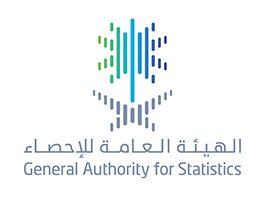
الهيئة العامة للإحصاء: ارتفاع الرقم القياسي لأسعار الجملة خلال شهر فبراير 2019م
GASTAT: Wholesale Price Index Increases in February 2019
On Wednesday, the 13th of Rajab 1440 H/ 20th of March 2019 AD, the General Authority for Statistics (GASTAT) released its the monthly indicator of Saudi wholesale price index for February and it was published on its website www.stats.gov.sa . The indicator recorded (116.5) points with 0.1% increase in February 2019, compared to last month (January) where it recorded (116.4) points. The indicator includes five main sections; agriculture and fisheries products, raw materials and metals, Food products, beverages, tobacco and textiles, metal products, machinery and equipment, and other goods.
The report attributed that increase to the outcome of the changes of the five main sections composing this indicator; metal products, machinery and equipment increased to 1.0%. On the other hand, raw materials and metals decreased by 1.0%, agriculture and fisheries products went down 0.5%, and other goods 0.5%. However, food products, beverages, tobacco and textiles remained without any changes.
Saudi Arabia's wholesale price index measures the average changes in the prices of goods and services sold in primary markets and takes into account the change in price only. Accordingly, all changes resulting from differences in quality, quantity discount, Shipping method, and other influencing factors in order to obtain the net price only after excluding all the mentioned effects. This number is general for all and is prepared in all parts of the Kingdom.
It is worth mentioning that the wholesale price index is used to monitor the changes in the prices of local or imported goods, which are dealt with in the market, and consequently to determine the price trends and the conditions of the market variables. The wholesale price index is one of the important tools used to prepare national accounts, by clearing income and national groups from the impact of price changes.
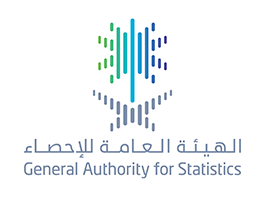
الهيئة العامة للإحصاء: انخفاض الرقم القياسي العام لأسعار المستهلك لشهر فبراير 2019م بنسبة 0.2%
GASTAT: Consumer Price Index (CPI) Decreases by 0.2% in February, 2019
On Tuesday, Rajab 12th, 1440 H (corresponding to March 19th, 2019), The General Authority for Statistics (GASTAT) released its monthly report of Saudi Arabia’s Consumer Price index (CPI) for last February. The report was published on its official website www.stats.gov.sa.
(CPI) went down 0.2% in February and reached (105.7) points compared to (105.9) points in January at the same year.
On the other hand, the report attributed the monthly decline of the index to the declines of the six sections composing it, which are: housing, water, electricity and gas section with 0.6%, home furnishing and equipment section with 0.4%, food and beverages section with 0.2%, culture and entertainment section with 0.2%, transportation section with 0.1%, and finally telecommunication section with 0.1%.
In contrast, two of the main sections witnessed an increase, which are: restaurant and hotels sections with 0.3 %, and personal goods and services section with 0.2%.
Tobacco section, clothing and shoes section, health and education sections remained stable with no change.
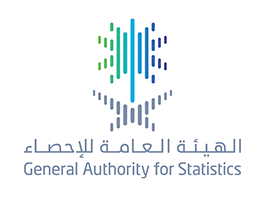
"الإحصاء" تُصدر مؤشر مساهمة المنشآت الصغيرة والمتوسطة في القطاع الخاص للربع الثالث 2018م
Small enterprises’ revenues increase by (0.9%)
“GASTAT” releases the indicator of SMEs contribution to private sector for the third quarter of 2018
On Monday 18th of Rajab 1440 H corresponding 25th of March 2019, the General Authority for Statistics (GASTAT) released the results of SMEs contribution to private sector’ indicator for the third quarter of 2018. The indicator is published on GASTAT official website www.stats.gov.sa. It measures the contribution of SMEs in the growth of the private sector, while reflecting the development of these enterprises.
The results showed an increase in the revenues of small enterprises which employ (6 to 49) workers in the private sector with a percentage of (0.9%) compared to the third quarter of last year (2017). However, the revenues of medium enterprises that employ (50 to 249) workers in the private sector registered (113,654,809) SAR in quarter 3, 2018.
The results also demonstrated an increase in the number of small enterprises workers as they recorded (1,627,482) workers in quarter 3, 2018 with a percentage of (1.8%) compared to the same quarter of 2017.
Regarding the numbers of workers in medium enterprises which employ (50 to 249) workers in the private sector, they increased to reach (917,847) workers in quarter 3, 2018 with a percentage of (2.5%) compared to quarter 3, 2017.
The results of the indicator of SMEs contribution to private sector (quarter 3, 2018) indicated a decrease by (2.4%) in the numbers of workers in micro enterprises which employ (less than 5 workers) in the private sector with (2,015,019) workers during the third quarter of 2018, compared to the third quarter of 2017.
On the other hand, the results also revealed a decrease in the revenues of micro enterprises that employ (less than 5 workers) in the private sector during the third quarter of 2018, with a percentage of (3.0%) compared to the third quarter of 2017, where they registered (171,256,482) SAR.

الهيئة العامة للإحصاء: المملكة على بُعدِ عامٍ من تعداد السعودية 2020
Tuesday Evening March 17th, 2020 is the Beginning of the Fifth Census’ Actual Enumeration
GASTAT: Saudi Arabia is One Year Away Until the Saudi Arabia Census 2020
The General Authority for Statistics (GASTAT) revealed that the fifth census of population, housing and establishments in Saudi Arabia “Saudi Arabia Census 2020” will start on Tuesday, March 17th, 2020, which is the beginning of the actual enumeration “evening of time reference”. The census will provide a broad statistical database to be used as a reliable basis when conducting studies and research required by the development programs and plans in Saudi Arabia and the Saudi Vision 2030. Furthermore, it provides statistical data and indicators to measure changes in population characteristics over time, conducts local, regional and international comparisons, and review and evaluate future population estimates.
In this Census, GASTAT will rely on different methods to ensure getting accurate information through linking data together in addition to the cooperation with the National Information Center and the Saudi Post. This is done in accordance with the preparations made by GASTAT and their partners in order to implement the “Saudi Arabia Census 2020”. This census will be different from previous censuses due to the change in the enumeration method by integrating the register-based data with field data.
The official spokesman of GASTAT , Mr. Taiseer Al-Mufrrej, said that GASTAT has completed the updating of the populated areas directory in all regions of the Kingdom, in addition to updating the postal addresses in several administrative regions, which are: Makkah, Madinah, Jazan, Najran, Al-Baha, the Northern Border, Tabuk, Hail and Al-Qassim. He also explained that during the month of Sha'ban the postal addresses in the city of Riyadh and the eastern region will be updated. He also added that the preparation of the operational plans for manpower, training, and publishing has been initiated. This is the first phase of the Saudi Arabia Census 2020, which will be followed by the second phase (the actual enumeration phase), then the third phase (data processing phase) then finally the announcement of the results.
The first official census in Saudi Arabia was conducted in 1394H. (1974), then the second was conducted in 1413H. (1992), followed by the third in 1425H.(2004). Finally, the fourth census made by the Central Department of Statistics and Information prior to the transformation into the General Authority for Statistics was conducted in 1431H. (2010). The total population in the 2010 census was (27,136,977) people.
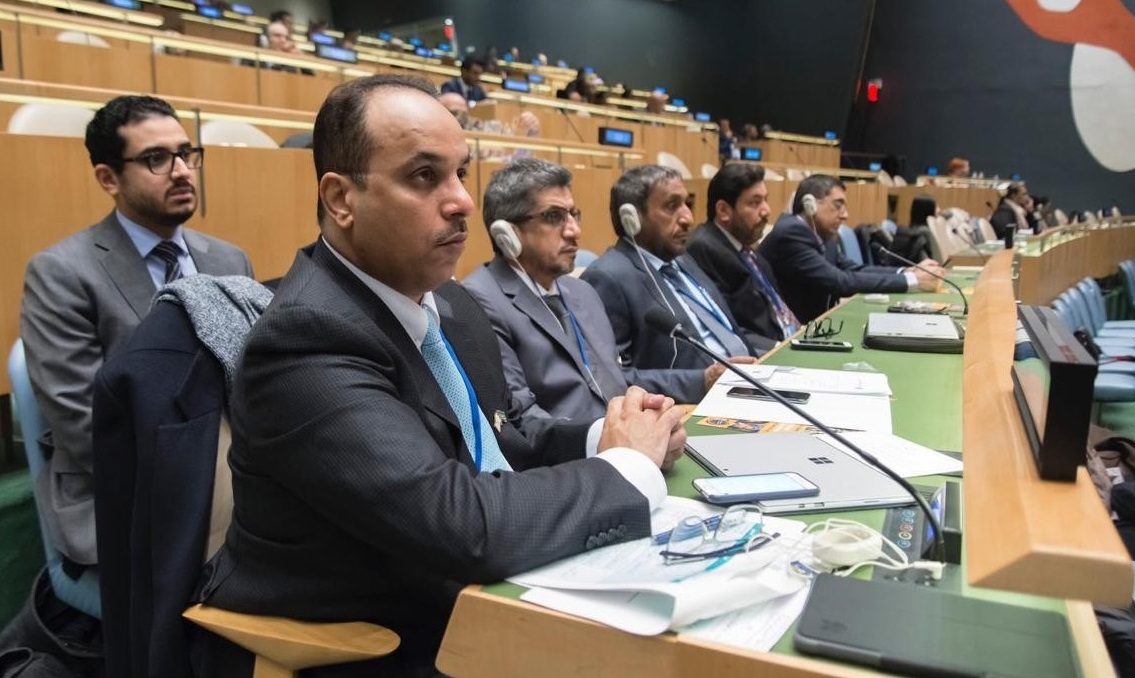
المملكة تختتم مشاركتها في أعمال الدورة الـ (50) للجنة الإحصائية للأمم المتحدة
Saudi Arabia Ends its Participation in the Works of the United Nations Statistical Commission (50th Round)
Yesterday 9, Mar 2019, Saudi Arabia Ends its Participation in the works of the United Nations Statistical Commission (50th Round). It started last Tuesday until yesterday evening at the United Nations headquarter in New York City. The delegation was headed by his Excellency Dr. Fahad bin Sulaiman Altekhaifi, president of the General Authority for Statistics. The participation was an extension of the Authority strategy for international collaboration, Altekhaifi said. Also, to benefit from the best statistical practices to be reflected on the development of the statistical sector in Saudi Arabia, he added. Moreover, Saudi Arabia has reviewed a number of development axes for the statistical sector. The works of the (50th) meeting dealt with a number of important topics related to the role of statistical data in the development process, the fundamental principles of official statistics, open data and national quality assurance frameworks, regional statistical development, discussing all the matters related to national accounts and price, international trade statistics, industrial statistics, and statistics related to disasters, in addition to education statistics.
the General Authority for Statistics of Saudi Arabia will publish a statistical report of the goals of sustainable development indicators with social, economic and environmental dimensions in time series that will ensure measuring the progress in achieving them, President of GASTST clarified. Saudi Arabia is working alongside with international organizations of the indicators to measure all the indicators correctly, he added.
The Authority participated in the Works of the United Nations Statistical Commission through a variety of themes and issues, including: educational Statistics which indicated that training and education sector in the kingdom of Saudi Arabia witnesses an increasing attention under Saudi Arabia's Vision 2030, and national transformation program which has developed many initiatives related to the development of education and training and aims to raise the quality of education and training outputs, make them relevant to the labor market and encourage creativity and innovation in scientific research as the policy-making and planning in this field requires accurate and comprehensive data to support decision makers. It has also developed register-based data of education, through conducting a household survey regularly every three years for training and education.
General Authority for Statistics will provide a quality services in order to reach the expectations and the needs. It will also provide high quality services through statistical data collection as well as analyzing, keeping and publishing the data. Also, through implementing and improving the quality system. It seeks to fully implement the National Accounts System 2008 which helped in developing many forms of economic and household surveys to assist obtaining the necessary data to apply all the accounts in accordance with the concepts of the System of National Accounts 2008, GASTAT is also working to build national accounts and economic statistics capabilities to enable them to carry out their tasks in accordance with the recommendations of international standards.
GASTAT also stressed on the importance of understanding the system of national accounts for urgent economic developments, and prepare accessories to the System which clarifies how to address these developments through theoretical framework and applied framework as well as show experiences of countries.
It is worth mentioning that Saudi Arabia has been chosen with (11) countries globally to fill the membership of the board of directors of the International Comparison Program in the United Nation of the period 2017-2019, based on the vote of the Statistics Division of the United Nation and Data Development Group of the international bank to represent the countries of Western Asia. Saudi Arabia has been chosen to this membership as appreciation to the positive role of GASTAT in various statistical programs organized by the United Nation. The formation of the administrative structure of the International Comparison Program includes: United Nation Statistical Commission, management board (GASTAT membership), the joint work teams among agencies, consulting and technical coordination committees, as well as the implementing international agency (World Bank), regional offices, the Statistical Office of the European Union (Euro stat), the Organization of Cooperation and Development, and the participating national statistical offices.
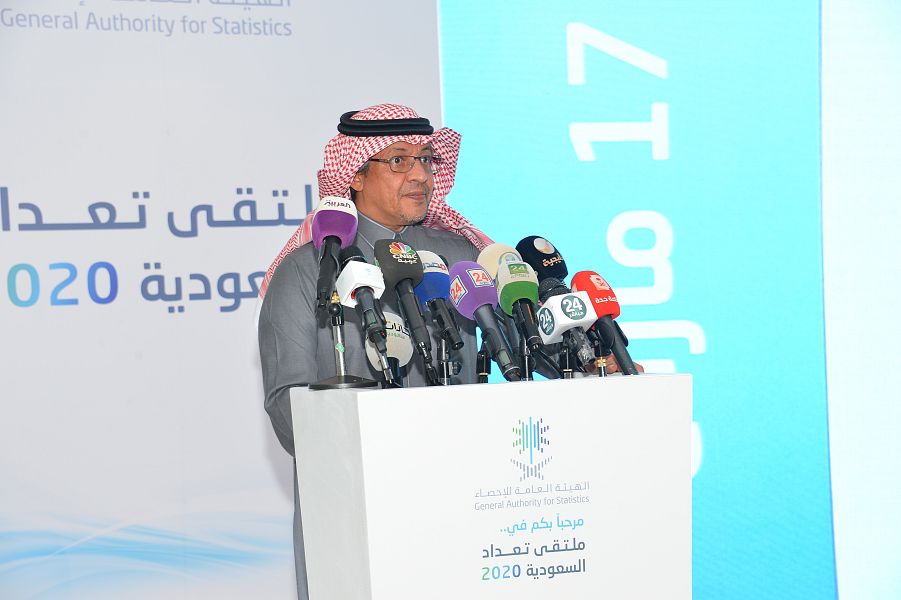
الهيئة العامة للإحصاء تعلن عن ليلة الإسناد الزمني لتعداد 2020

الهيئة العامة للإحصاء تشارك في الاجتماع الرابع لمجلس الإدارة لبرنامج المقارنات الدولية 2019م
GASTAT Participates in ICP Board of Directors Fourth Meeting (2019)
The General Authority for Statistics (GASTAT) has participated in the International Comparison Program (ICP) board of directors fourth meeting held in New York, USA, on Sunday Jumada Al-Thani 26th, 1440 H. (March 3rd, 2019). Dr Fahad Altekhaifi, the President of GASTAT, indicated that the board of directors comprises eleven state members including the Kingdom of Saudi Arabia which represents West Asia. It discussed the progress reached so far in the implementation of the ICP of 2017, the communication and dissemination strategy, the preparation for the forthcoming session in 2020 in addition to the discussion of several other topics relevant to statistical work.
Dr Altekhaifi also added that the selection of Saudi Arabia to be a member in the ICP board of directors for the years 2017-2019 comes as a recognition of GASTAT positive role in the various statistical programs organized by the United Nation. He also said that it is an affirmation of the Kingdom’s active role in the world’s statistical map, and reflects the results of the statistical sector strategic transformation in the Kingdom, which is supported by the government due to its role in supporting national development decisions. The World Bank's International Comparison Program is a global statistical partnership program based on a statistical system that is integrally connected to the economic analysis. It uses statistical methods to derive the necessary data to calculate the PPP for about 200 countries and economies worldwide. It will facilitate the use of PPP as currency converters, which will allow the comparison of the total economic indicators and the economic conditions of countries worldwide which helps to allow users to track progress towards achieving sustainable development goals and effectively guide programs towards their goals. The program is geographically divided into six regions under the supervision of the ICP office at the World Bank.
Altekhaifi confirmed that the program’s work and results will help shape policies for global comparison to support statistical products of the participating countries. It will also enable GASTAT to access the best statistics global practices to improve and develop the statistical work.
It is noteworthy to mention that the ICP board of directors is compiled of, chairpersons, directors and leading experts in 11 statistical agencies participating in the program. They are distributed according to the regional areas: Africa, Asia, Pacific Islands, Latin America, the Caribbean, West Asia, Commonwealth of Independence States, European Union, non-European Union States, members of the organization for Economic Cooperation and Development, representatives of the International Monetary Fund, World Bank, UN Statistics Division, and the Inter-Agency Coordination Group.
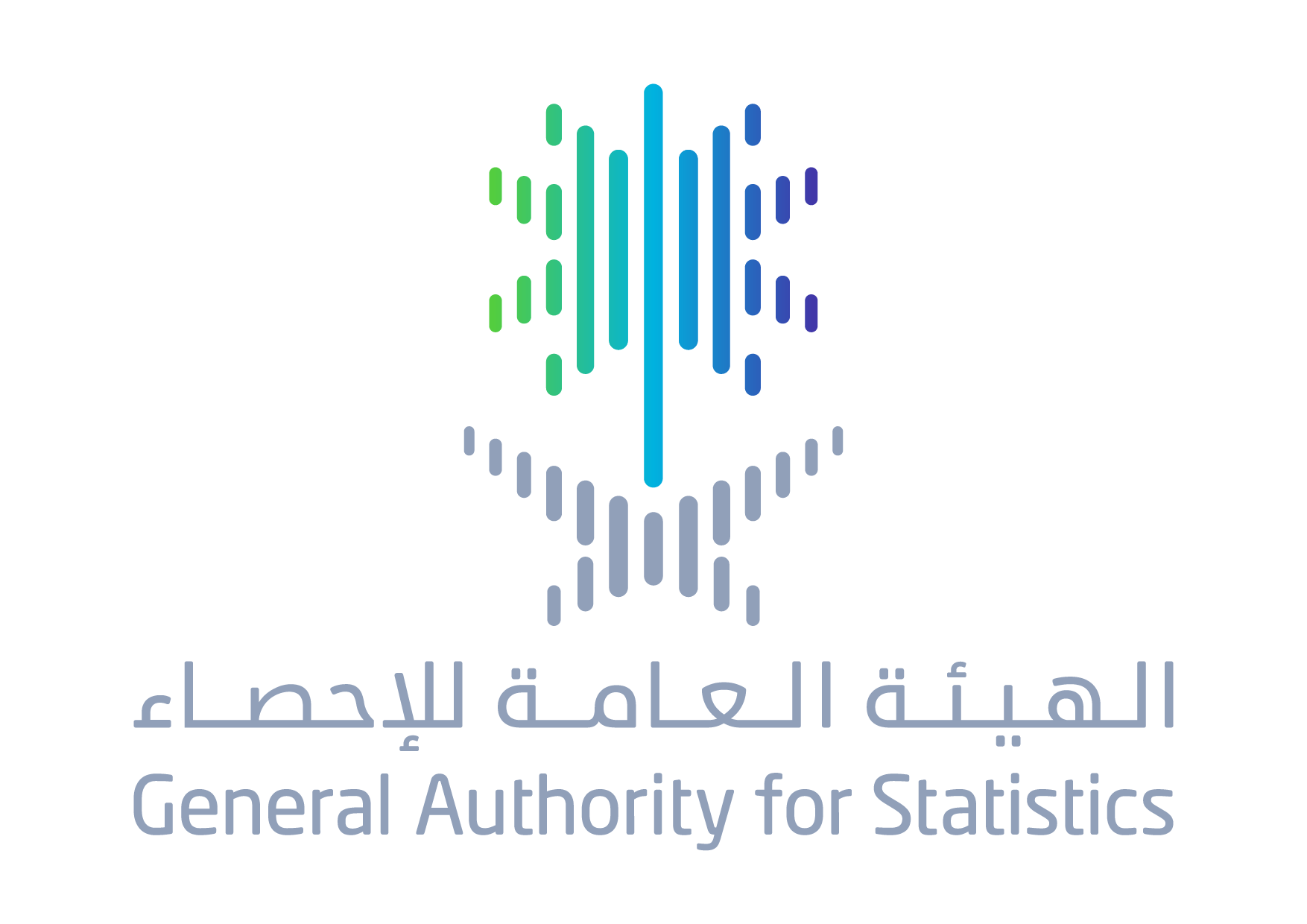
الهيئة العامة للإحصاء: (17.40%) من السكان يمارسون الرياضة لأكثر من 150 دقيقة في الأسبوع
According to Households Sport Practice Survey in Saudi Arabia
GASTAT: (17, 40%) of population are practicing sports for more than 150 minutes on a weekly basis
GASTAT has released today the results of Households Sports Practice Survey, 2018. Households Sports Practice is one of the Saudi Vision 2030 requirements. In addition, this kind of practice includes indicators that are targeted by 2030.The data of survey allows conducting many developmental studies and plans in general, and in the sports field in particular. These studies and plans should support the development of many programs and initiatives that do increase the rate of Households Sports Practice. The survey methodology and form considered international standards and recommendations issued by ILO.
According to the survey results, the percentage of individuals (15 years and over) who are engaged in sports activities for more than 150 minutes weekly reached (17, 40%) compared to (82,60%) of individuals who do not practice sport. Saudi males and females practicing sport activities for 150 minutes or more per week hit (13.08%) of the total population of the Saudi Arabia for those aged 15 years and over. The percentage of Saudi males was (10.14%) while it hit (2.94%) for Saudi females. On the other hand, the percentage of non-Saudi males and females practicing sports activities for the same category was (4.32%).
The results of the survey showed that the percentage of individuals practicing walking activity was (56.05%) of the total number of sports participants. Walking is the most practiced activity by individuals in Saudi Arabia, followed by football activity where it reached (25.69%) out of total number of sport participants. In addition, the percentage of individuals who are engaged in bodybuilding activity reached (5.80%) out of total sport participants, running activity on the other hand hit (2.72%) out of total sport participants. Swimming activity is the least practiced sport activity by individuals according to the survey results where it reached (2.34%) out of total sport participants. (8.46%) represent the percentage of other types of sport practiced by individuals out of total sport participants.
The survey results revealed that the reasons of not practicing sports among Saudi population
varied. Some individuals have no desire to practice sport with a percentage of (44.73%), followed by those who do not have the time to practice sport with (29.74%) out of total number of individuals who do not practice sport. Those who didn’t have accessible facilities inside the district
which reached (13.09%) out of total number of individuals who do not practice sport. Additionally, individuals who cannot practice sport due to injury or disability reached (10.83%) out of total number of individuals who do not practice sport. Finally, individuals who cannot practice sport due to other reasons reached (1.64%) out of the total number.
Field survey of Household Sport Practice aim to provide recent statistical data and indicators about the extent of sport practice for households as well as identifying the reasons behind not practicing sports according to the kind of relationship with the household head. The classification was by gender, nationality, educational status, age and marital status. The survey also provides data about the percentages of sport practice by households at the administrative regions level.
GASTAT: Saudi Unemployment Rate Falls in Q3 of 2018
GASTAT Releases Labor Market Bulletin for Q3 of 2018
GASTAT: Saudi Unemployment Rate Falls in Q3 of 2018
General Authority for Statistics (GASTAT) has released Labor Market Bulletin for Q3 of 2018. It has been published on GASTAT's official website www.stats.gov.sa, in accordance with surveys of labor force conducted by the Authority on a quarterly basis, together with data of labor market, based on administrative records of relevant entities. Such entities include: Ministry of Labor and Social Development, Ministry of Civil Service, General Organization for Social Insurance, Human Resources Development Fund, and National Information Center.
The economic participation rate of total population (15 years and above) has risen by (56.4%)for Q3, compared to (56.2%) for Q2. During the same period, the economic participation rate for total Saudis, at (42.0%), and for Saudi males (15 years and above) at (63.5%), has not changed in Q3. However, the economic participation rate of Saudi females (15 years and above) has increased to (19.7%), compared to (19.6%)in the previous quarter, results showed.
According to the survey's data, unemployment rate of total Saudis (15 years and above) has fallen to (12.8%), compared to Q2(12.9%). Moreover, unemployment rate of total population (15 years and above) has stabilized at (6.0%) in Q3 of 2018. Concerning genders unemployment rate, it has decreased for both sexes, reaching (30.9%), compared to (31.1%) in Q2 for (Saudi females), in addition to (7.5%), compared to (7.6%) in Q2 for (Saudi males).
The total number of workers, according to administrative records of Saudi Arabia, has witnessed a decline in 2018 by (12,688,042) persons for Q3, compared to (13,018,066) persons for Q2, with a decrease of (330,024) persons. Regarding Saudis, the number of workers, based on administrative records, has edged down to (15,356) persons, reaching (3,109,987) persons, compared to (3,125,343) persons for Q3 and Q2, respectively, the report noted.
For non- Saudis, the number of male workers, based on administrative records of Saudi Arabia for 2018, has fallen to (8,622,890) persons in Q3, compared to Q2 (8,927,862) persons, with a decrease of (304,972) persons. Additionally, the number of female workers has dropped by (9,696) persons, reaching (955,165) persons in Q3, compared to (964,861) persons in Q2, according to the results.
Based on the bulletin's results, data of Ministry of Civil Service (Jdarah and Saed programs), and data of Human Resources Development Fund (Hafiz and Taqat programs), the total number of Saudi job seekers, according to Saudi Arabia's administrative records, has decreased by (195,297) persons, recording in Q3 (923,504) persons, compared to (1,118,801) persons in Q2.
It is worth mentioning that job seekers have been defined by GASTAT as: Saudi individuals (males or females) enrolled in job search programs of Ministry of Civil Service (Jdarah or Saed), and Human Resources Development Fund (Hafiz). Further, they register their personal data, qualifications, occupational experiences, and CVs through an electronic system. It is important to keep in mind that job seekers are not subject, in administrative records, to the internationally recognized standards and conditions of unemployment approved by the ILO; therefore, they are not considered to be unemployed. Hence, not every job seeker is considered unemployed, s/he may be looking for work, and is working in another job at the same time. This also applies in situations of self - employed workers, who are looking for government entities job, and are not registered as workers in government records (Civil Service, Social Insurance, commercial records, and municipal licenses). For example, self-employed persons who do not work inside establishments.
GASTAT Releases Housing Bulletin to Describe Households’ Dwellings Until the Mid of 2018
“Owned dwellings” increases, rented dwellings decreases with the growth of households numbers
GASTAT Releases Housing Bulletin to Describe Households’ Dwellings Until the Mid of 2018
On Saturday 20th of Jmadah AL-Awal 1440 (January 26th ,2019), GASTAT released Housing Bulletin on its official website www.stats.gov.sa which combines the results of the field survey that was held between 17/7/1439 and 22/8/1439 corresponding to (14/4/2018 to 18/5/2018) as well as record-based data provided by Ministry of Housing related to housing support . The bulletin aims at providing data of dwellings occupied with Saudi households (owned, rented, employer-provided housing) at Saudi Arabia’s administrative level. Additionally, the bulletin studies the characteristics of the dwelling and its surrounding environment, creates a database for dwellings, meets the local and international requirements as well as the needs of researchers and planners related to dwellings characteristics that are required by developmental plans. The bulletin also provides periodical data and indicators to measure the change in dwellings over time as well as conducting international, regional and local comparisons. Finally, it measures the improvements and the growth of the housing fields according to the type and age of the dwelling occupied by the household.
On the other hand, Housing Bulletin showed that the number of Saudi households increased to (3.591.098) until the mid of 2018. For the same period, the results showed that the number of owned dwellings occupied with Saudi households increased (3.43%) compared to the same period of 2017 where owned dwellings occupied with Saudi households and used all construction materials reached (60.49%). Moreover, owned dwellings excluding dwellings that were built with “non-reinforced” construction materials reached (51.70%) compared to (41.91%) in the middle of 2017. The percentage of rented dwellings occupied with Saudi households decreased by (37.63%) in the middle of 2018 compared to (38%) in the middle of 2017. However, these percentages do not reflect the percentage of individuals who owned dwellings but the type of dwelling (owned, rented, employer-provided housing) that may be occupied by one household or more.
In addition, the bulletin showed that the number of dwellings occupied with Saudi households in Saudi Arabia increased (2.46%) in the middle of 2018 compared to the middle of 2017. Dwellings occupied with Saudi households (owned, rented, employer-provided housing) until the mid of 2018 reached (64.2%) out of total dwellings in Saudi Arabia where the highest percentage was recorded in Makkah with (24.96%) followed by Riyadh with (23.68%), then in the Eastern Region with (14.31%), Asir (8.55%), Madina (6.92%), Jazan (4.93%), AL-Qassim (4.64%), Tabuk (3.37%), Hail (2.22%), Najran (1.90%), AL-Baha (1.88%), AL-Jouf (1.60%), finally, Northern Boarders (1.04%).
In regard to the materials used in dwellings construction and occupied with Saudi households (owned, rented, employer-provided housing), the results showed that reinforced construction increased by (4.31%) compared to the mid of 2017. Dwellings occupied with Saudi households (owned, rented, employer-provided housing) and were built with (bricks) decreased by (9.2%) in the mid of 2018 compared to the mid of 2017 where dwellings occupied with Saudi households and were built with reinforced construction reached (89.54%) and dwellings occupied with Saudi households and were built with (bricks) reached (10.44%).
The results also showed that the majority of dwellings (99.85%) occupied with Saudi households (owned, rented, employer-provided housing) depend on a public network as main source for electricity and are occupied with (99.86%) out of total Saudi households’ individuals.
GASTAT confirmed that the results of the Housing Survey indicate the status of Saudi households’ dwellings until the mid of 2018. On the other hand, the record-based data of the Ministry of Housing showed the number of beneficiaries of the subsidized housing provided by “Sakani” program reached (67.070) Saudi households at the administrative level during 2018.
General Authority for Statistics (GASTAT) Released Real Estate Price Index Q4, 2018
General Authority for Statistics (GASTAT) Released Real Estate Price Index Q4, 2018
On Thursday, 18th of Jumada al-Awwal 1440H corresponding to January 24, 2019, General Authority for Statistics(GASTAT) released the report of Real Estate Price Index, Q4 2018 on its official website www.stats.gov.sa .
The real-estate price index has recorded a decline by (2.3%) compared to the previous quarter (Q3, 2018), where the indicator of the Real Estate Price index reached (80.4) in the fourth quarter of 2018 compared to (82.3) in (Q3, 2018). This decline can be attributed to the decrease in the main sectors composing it: housing sector (2.6%), commercial sector (1.7%), and agricultural sector (0.1%) compared to the third quarter of the current year.
In fact, the housing sector witnessed an increase in the residential houses by (0.5%) during the 4th quarter of 2018 compared to the previous quarter. On the other hand, residential lands decreased by (0.6%) as well as villas (1.7%), residential buildings (0.6%), apartments (0.2%), commercial plots (0.7%) compared to the previous quarter. Commercial centers have also decreased by (0.2%) and the agricultural sector recorded a decline by (0.1%).
It is worth mentioning that real estate price index is based on record-based data available at the Ministry of Justice. This indicator is an important tool to support economic and statistical decision makers regarding the changes of property prices and future forecasts during different periods of time. Real estate price index includes three main sectors consisting of several categories of real estate: housing sector which includes the following (plot of land, building, villa, apartment and house), commercial sector includes (plot of land, building, exhibition/ commercial center and shop), and the agricultural sector with only one category which is the agricultural land.
The real estate price index aims at finding accurate real estate statistical indicators that measure the real estate market in Saudi Arabia according to internationally recognized scientific principles and standards. It also aims at filling the data gaps related to the real estate field and is considered as an important tool to support economic decision makers in this field.
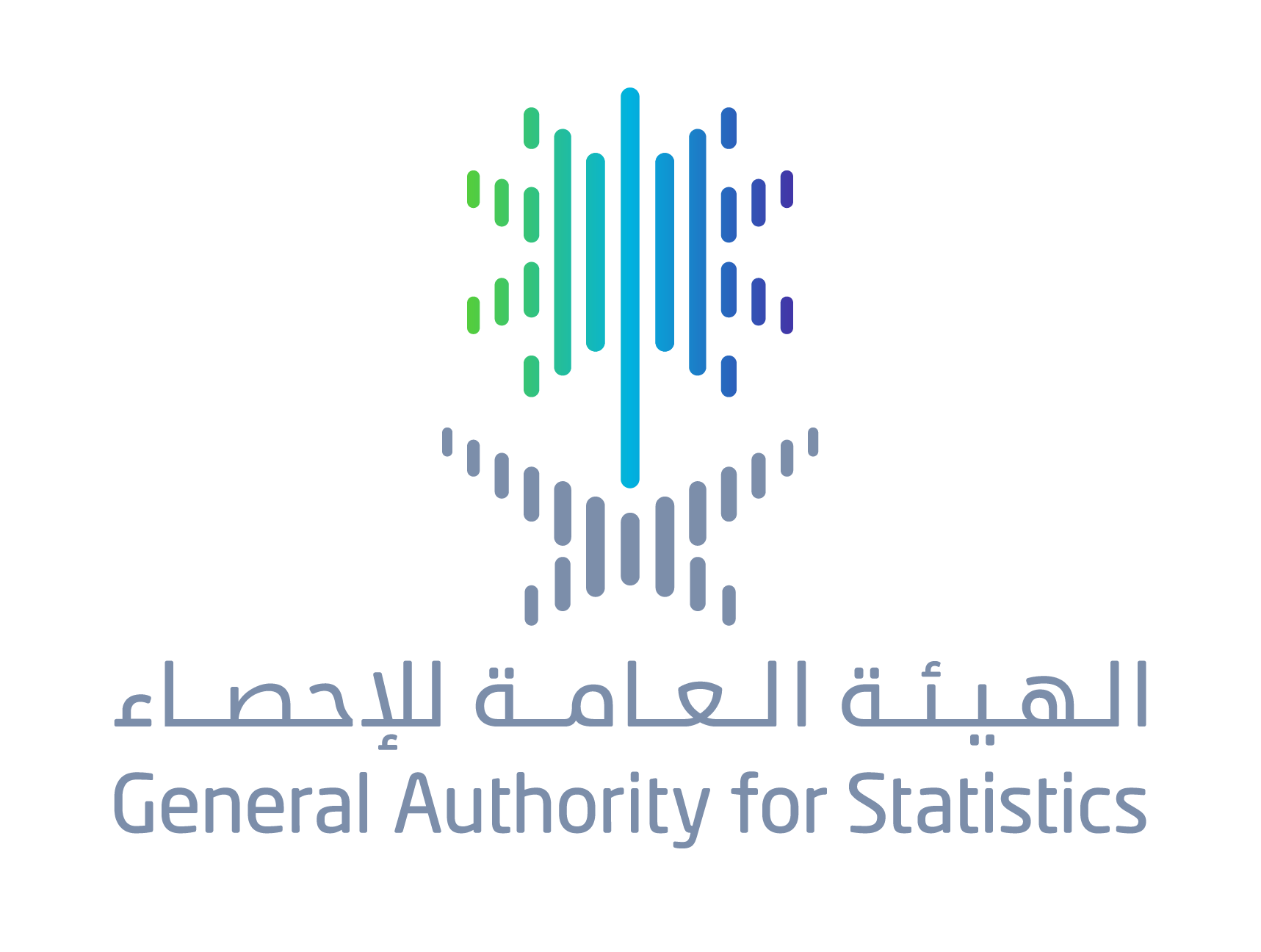
الهيئة العامة للإحصاء: استقرار الرقم القياسي لأسعار الجملة لشهر ديسمبر 2018م
General Authority for Statistics (GASTAT): Stability in Wholesale Price Index, December 2018
On Wednesday, the 17th of Jumada al-Awwal 1440H corresponding January 23, 2019, The General Authority for Statistics (GASTAT) released its monthly indicator for Wholesale Price Index (December 2018) on its official website www.stats.gov.sa.
The wholesale price index stabilized at (116.9) in December 2018, and did not record any change compared to the previous month (November 2018).
The indicator includes five sections, which are: agriculture and fishery products section, ores and minerals section, food and beverages products, tobacco and textiles section, mineral products, machines and equipment section and other goods.
Today’s report attributed the index’s stability of the wholesale prices of December to the changes of the five sections composing the index, where two of them have increased; which are: mineral products, machines and equipment section (0.5%) and other goods (0.1%).
In turn, three sections went down, which are: agriculture and fishery products section (1.4%), food, beverages, tobacco and textiles (0.4%), raw materials and metals (0.1%).
Wholesale price index in Saudi Arabia measures average changes in goods prices and services sold in primary markets taking into consideration that the change is only in price, so consequently, all changes resulting from variation in qualities or discount in quantities or variation in method of shipping and other influential factors are excluded to get only net price after excluding all the mentioned indicators. This number is for everyone and it is prepared based on Saudi Arabia
Additionally, wholesale price index is used to monitor changes in the prices of local or imported goods, which are dealt with in the market, consequently to identify price trends and market conditions. The wholesale price index is an important tool to prepare national accounts, by saving income and national accounts from the impact of price change.
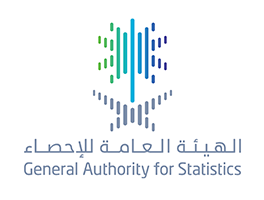
الهيئة العامة للإحصاء : انخفاض الرقم القياسي العام لأسعار المستهلك لشهــــر ديسمبر 2018م بنسبة 0.3 %
GASTAT: Consumer Price Index (CPI) Decreases by 0.3% in December, 2018
On Tuesday, Jumada al-Awwal 16th, 1440 H (corresponding to January 22th, 2019), The General Authority for Statistics (GASTAT) released its monthly report of Saudi Arabia’s Consumer Price index (CPI) for December. The report was published on its official website www.stats.gov.sa.
(CPI) went down 0.3% in December compared to the previous month (November 2018).
(CPI) in Saudi Arabia decreased to (106.2) index points in December from (106.5) points in November of 2018 with 0.3% change, report showed.
The report attributed the monthly decline of the index to the declines in six of the main sections of the consumer price index, which are: food and beverage by 0.5%, housing, water, electricity, gas and other fuel by 0.5%, transport by 0.2%, home furnishing and equipment by 0.1%, communications by 0.1% and finally miscellaneous goods and services by 0.1%.
Tobacco, clothes, footwear, health, culture and entertainment, education, restaurants and hotels remained stable with no change.
On the other hand, annual change of the general CPI increased 22.2% compared to the same month last year reaching (106.2) points in December 2018 compared to (103.9) points in December 2017 with 2.2% change.
The ten sections composing the CPI contributed to the annual change, which are: transportation 12.0%, tobacco 10.2%, restaurant and hotels 7.3%, food and beverages 7.1%, home furnishing and equipment 5.0%, entertainment and culture 4.6%, health 4.0%, telecommunication 1.1%, personal goods and services 0.8% and education 0.2%.
On the other hand, two of the main sections witnessed a decline, which are: housing, water, electricity and gas section and with 5.1% as well as clothing and footwear with 3.2%.
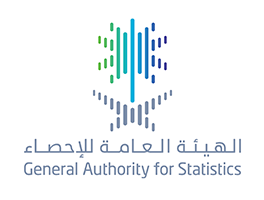
انخفاض معدل البطالة لإجمالي السكان (سعوديون وغير سعوديين) ليصل 6%، واستقرار معدل بطالة السعوديين عند (12.9%)
GASTAT Releases Labour Market Bulletin Q2, 2018
(Saudi and Non-Saudi) Unemployment Rate Drops to 6%, and Stabilizes at 12.9% for Saudi Citizens
On Thursday 9th of Safar corresponding to October 18, 2018, GASTAT releases the Labour Market Bulletin for the 2nd quarter of 2018 on its official website (www.stats.gov.sa); the bulletin is based on the estimates of the Labour Market Survey that is conducted by GASTAT on a quarterly basis as well as the administrative records available at the related entities (Ministry of Labour and Social Development, Ministry of Civil Affairs, General Organization for Social Insurance, Human Resources Development Fund, and National Information Center).
The Bulletin’s results showed a decrease in the number of total employees in the 2nd quarter based on the administrative records available in Saudi Arabia where the number reached (13.018.066) individuals compared to (13.333.513) individuals in the previous quarter; about (315.447) individuals from the previous quarter. The number of Saudi employees based on the administrative records edged down by (25.066) individuals where it reached (3.125.343) individuals compared to (3.150.409) individuals in the previous quarter. On the other hand, the number of Saudi male employees decreased by (14.787) individuals and the number of Saudi female employees edged down by (10.279) individuals.
According to the estimates of 2nd quarter 2018 survey, the economic participation rate of total population (15 years and above) rose to (56.2%) compared to (55.5%) in the previous quarter. Saudi economic participation increased by (42.0%) compared to (41.9%) in the previous quarter. Saudi male economic participation rate stabilized at (63.5%); on contrary, Saudi female economic participation edged up to (19.6%) compared to (19.5%) in the previous quarter.
Furthermore, the data of the Labour Market Bulletin Q2,2018 showed a stability in the unemployment rate for total Saudis (15 years and above) based on the survey’s estimates compared to the previous quarter where it reached (12.9%). On the other hand, the results also showed a decrease in the unemployment rate for the total population where it reached (6.0%) compared to (6.1%) in the first quarter of 2018; a decrease of (0.1%). In contrast, the unemployment rate of Saudi females edged up to (31.1%) compared to (30.9%) in the previous quarter; however, the unemployment rate of Saudi males stabilized at (7.6%).
The number of Saudi jobseekers for the 2nd quarter of 2018 rose to (1.118.801) individuals based on the administrative records available in Saudi Arabia compared to (1.072.162) individuals in the previous quarter; with an increase of (46.639) individuals most of them are bachelor holders (42.894) individuals. On the other hand, the number of Saudi female jobseekers reached (34.238) jobseekers. It is worth mentioning that the criteria of measuring the number of jobseekers will be updated in the coming Labour Market Bulletin (Q3,2018) and that is based on a study that was conducted for job applicants through (Jadarh, Sa’ed, Taqat) by distributing a survey to job applicants in order to update their data.
GASTAT has defined jobseekers as Saudi individuals (males and females) registered in job seeking programs of the Ministry of Civil Affairs (Jadarh and Sa’ed) as well as Human Resources Development Fund (Hafez) where they entered their personal data, qualifications, experiences, and CVs electronically.
In fact, jobseekers included in the administrative records are not subjected to the internationally recognized criteria and conditions of the International Labor Organization (ILO); hence, not all of them are considered unemployed individuals. Therefore, not every jobseeker is an unemployed individual; they may be look for a work while still working in another job, as in the case of jobseekers in the government sector where they work for their own business and not registered as employees in the governmental administrative records (Civil Affairs, Social Insurance, commercial registers, and municipal licenses) such as those who work for their own business outside the establishments.
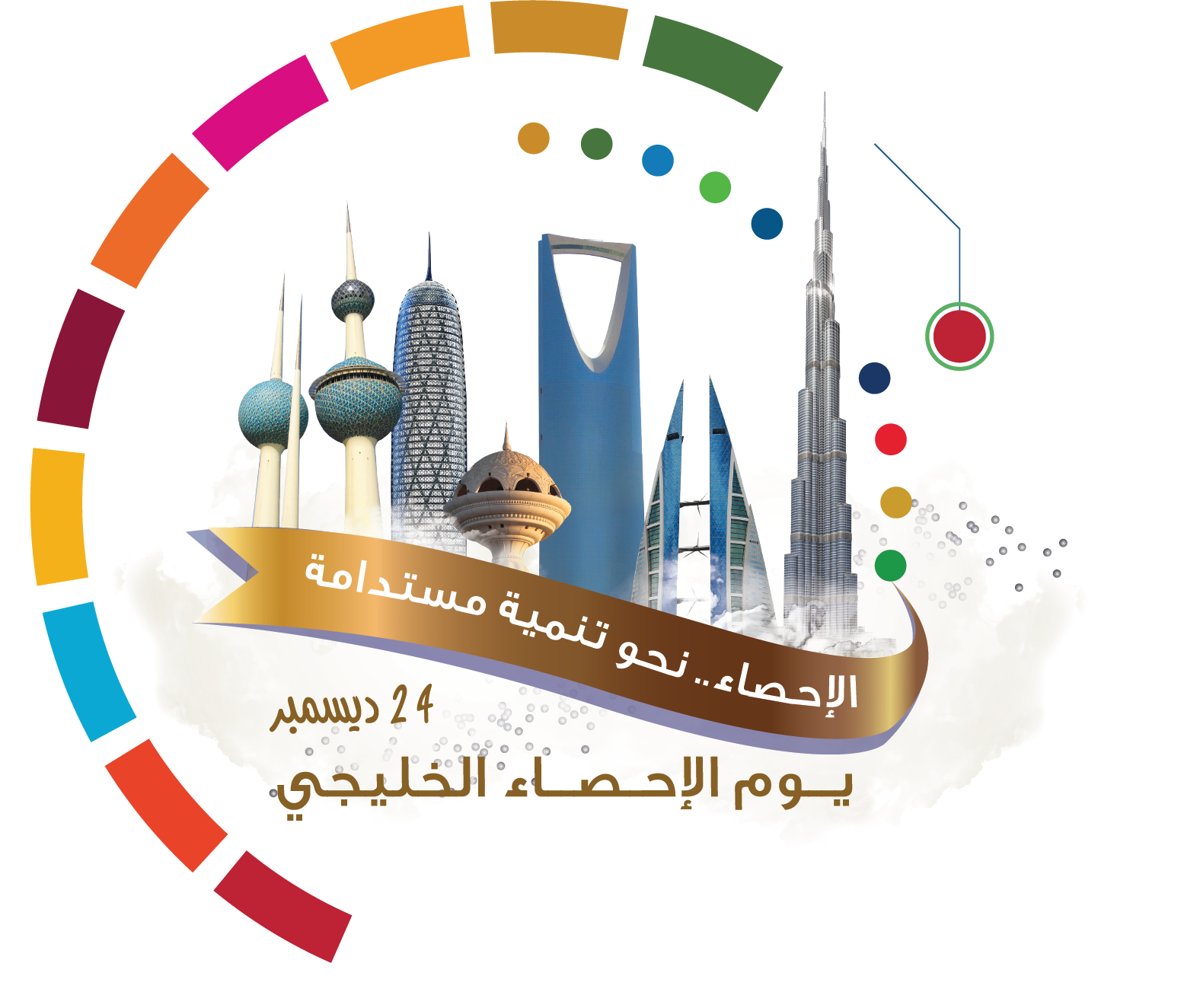
الهيئة العامة للإحصاء تصدر دليل التعريفات والمفاهيم والمصطلحات الإحصائية
Coinciding with the Gulf Statistics Day
GASTAT Releases the Manual of Statistical Definitions, Concepts and Terms
The General Authority for Statistics (GASTAT) will participate in the events of the gulf statistical day which occurs on December 24th of each year. The slogan of this year is “Statistics Towards Sustainable Development”. It emphasizes the role of the statistical centers and authorities of the Gulf Cooperation Council (GCC) countries in the sustainable development industry through providing accurate data of statistical indicators. The aim of the Gulf Statistics day is to highlight the achievements and challenges of the statistical work in the region, raise awareness of the importance and role of statistics in the social and economic development of GCC countries, emphasize the importance of the society cooperation with statisticians, highlight the importance that GCC countries attach to statistical work.
GASTAT official spokesman, Mr. Taiseer Almofarrej, explained that coinciding with this occasion, GASTAT releases the Manual of Statistical Definitions, Concepts and terms used in GASTAT. The manual includes more than 1200 definitions. It is a rich scientific work presenting the key terms and concepts of the statistical products issued by GASTAT to facilitate handling these products.
This guide is based on the standardization of definitions, concepts and statistical terminology used in the GCC countries. GASTAT updated and added some new concepts in order to contribute in enhancing transparency in statistical work, as well as to raise awareness to all producers and users of statistical data, information and indicators.
Mr. Almofarrej added that the manual covers the concepts and terms used in the field of statistics including, terms related to the general population and housing census, agricultural census and its concepts, population and vital statistics, government services statistics, geographic statistics, National concepts accounts statistics concepts, foreign trade, prices statistics, business and industry statistics and other statistical terms and concepts used in GASTAT.
It is worth mentioning that GASTAT is keen to enhance and enrich the statistical arabic content, provide statistical linguistic culture to interested individuals and specialists and disseminate vital statistical information and indicators about Saudi Arabia.
You can view the Manual of Statistical Definitions, Concepts and Terms on this link:
https://www.stats.gov.sa/ar/992
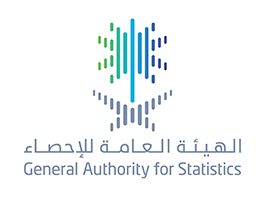
"الإحصاء" تُصدر نتائج مسح (البيئة الاقتصادية الصناعية) لعام 2017م
“GASTAT’’ Releases Results of (Industrial Economic Environment) Survey 2017
GASTAT released the results of Industrial Economic Environment Survey 2017 which was published on its official website www.stats.gov.sa. The survey includes results related to the amount of consumed water in (industrial economic establishments) with its different sources as well as wastes produced due to economic industrial activities and ways of disposal. The results also include types of energy used in industrial economic establishments.
97% of industrial economic establishments purchase the water they consume. The amount of purchased water consumed in these establishments reached (978 million cubic meter) in 2017. On the other hand, results showed that wastes resulted from activities of (industrial economic establishments) reached (20.2) tons, as follows: solid chemical wastes are the largest among them with 36% followed by liquid chemical wastes with 12%, then ferrous metal wastes with 10%, lastly, non-ferrous metal wastes with 6% .
The most used energy in industrial economic establishments during 2017 were natural gas (66%), diesel (18.7%), and gasoline 91 (10.3%), results showed.
In addition, types of energy used in industrial economic establishments include natural gas (66%), diesel (18.7%), gasoline 91 (10.3%), cooking gas (2.2%), crude oil (1.9%), and gasoline 95 (0.7%).
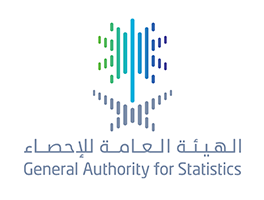
الهيئة العامة للإحصاء: خلال شهر نوفمبر 2018م: انخفاض المؤشر الشهري للرقم القياسي لأسعار المستهلك وارتفاع المؤشر السنوي.
GASTAT: Consumer Price Index (CPI) Decreases and Annual Index Rises in November 2018
General Authority for Statistics (GASTAT) released its monthly report of Saudi Arabia's Consumer Price Index (CPI) for November. The report was published on its official website www.stats.gov.sa . (CPI) went down to 0.2% in November compared to the previous month (October 2018).
(CPI) in Saudi Arabia decreased to (106.5) index points in November from (106.8) in October of 2018 with 0.2% change, (GASTAT) report showed.
On the other hand, the report attributed the monthly decrease of the index to the declines of the five main sections composing it, which are: housing, water, electricity and gas section with 0.8%, restaurants and hotels sections with 0.2%, food and beverages sections with 0.1%, clothing and footwear sections with 0.1%, and finally telecommunication section with 0.1%.
In contrast, two of the main sections witnessed an increase, which are: home furnishing and equipment section, and transportation section with 0.2%. Tobacco, health, culture and entertainment, education, and personal goods and services sections remained unchanged.
The year-over-year (YOY) of CPI registered an increase of 2.4% in November 2018 compared to the same month last year reaching (106.5) in November 2018 compared to (103.6) in November 2017 with 2.8%.
This increase was ascribed to the ten sections composing the CPI, which are: transportation 12.0%, tobacco 10.2%, restaurants and hotels 8.6%, food and beverages 7.7%, home furnishing and equipment 4.6%, health 4.0%, culture and entertainment 3.8%, telecommunication 1.3%, personal goods and services 0.6%, and finally education 0.2%,
On the other hand, two of the main sections witnessed a decline, which are: clothing and footwear section as well as housing, water, electricity and gas section by 4.5% and 3.1% respectively.
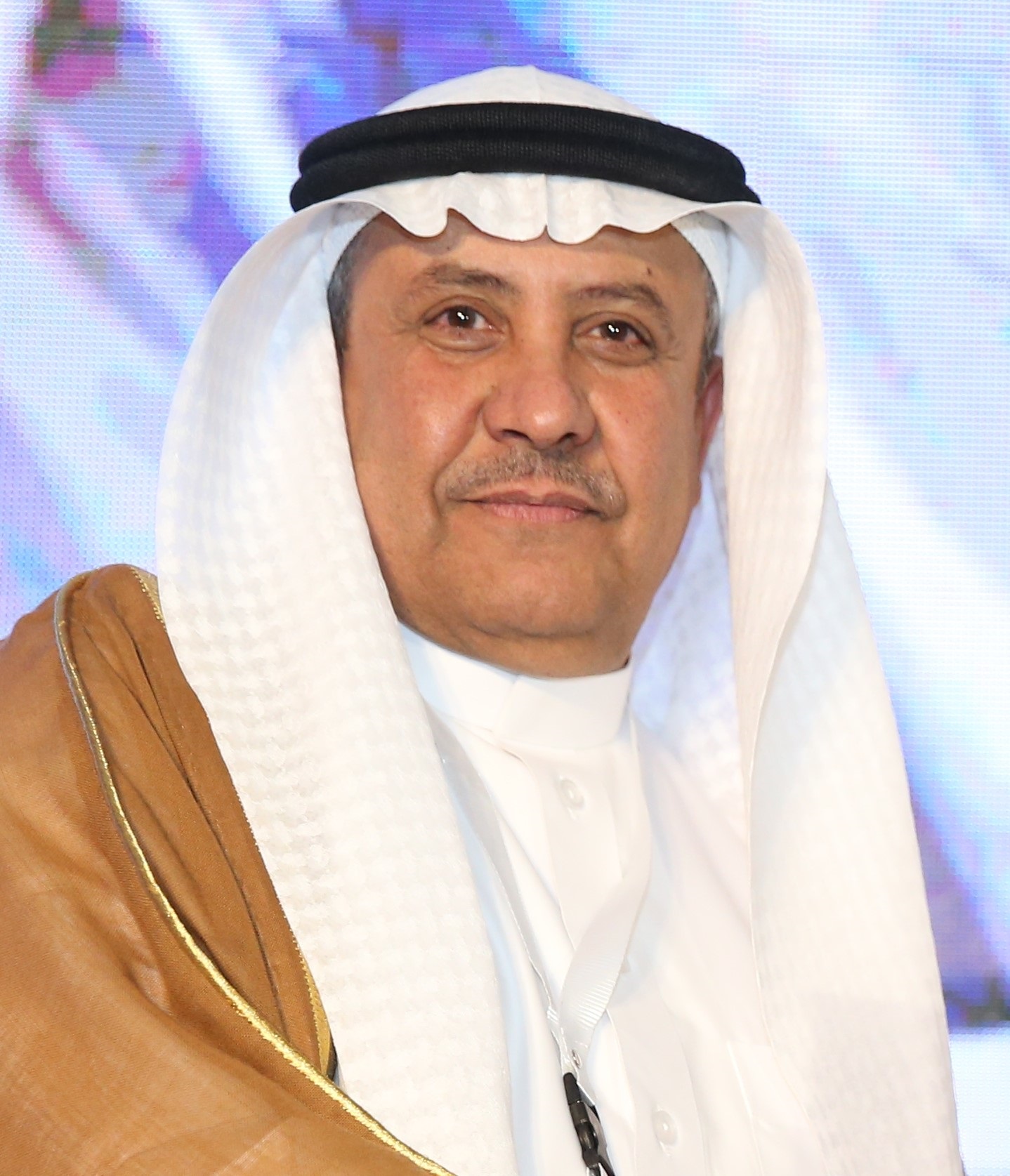
مجلس إدارة (سيسرك) يعقد اجتماعه الحادي والأربعين
With the participation of GASTAT
(SESRIC) board of directors holds its 41st meeting
As a representative of Saudi Arabia, the General Authority for Statistics (GASTAT) participated in the 41st meeting of the Board of Directors of the Statistical, Economic and Social Research and Training Center for Islamic Countries (SESRIC) on 18th December 2018 in Ankara city.
Saudi Arabia is a board member of the Statistical, Economic and Social Research and Training Center for Islamic Countries (SESRIC), which includes nine member states, seven of which are elected for 3- year period.
Saudi Arabia participation reflects the positive role of GASTAT in the different statistical programs. It also shows the progress achieved by Saudi Arabia in the statistical field, which highlights the effective role of Saudi Arabia in the international statistics map. In addition, it reflects the results of the statistical sector’ strategic transformation in Saudi Arabia, which the country always supports as it has a crucial role in making national development decisions.
The vice president of GASTAT, Mr. Abdullah Albatil said that this meeting discussed all the center works conducted in 2018 in many activities and events such as providing statistical data and information about the member states, facilitating the cooperation projects and statistical integration plans between the member states, enriching the center’s statistical database and expand its coverage, being up-to –date with all digital developments in the field of statistical publication and presentation, in addition to strengthening and enhancing the performance of the national statistics system in all member states in order to produce high-quality national statistics, for the purpose of supporting and assisting decision and policy makers, and enhancing the technical capabilities of the national statistics offices in the member states.
Albatil added that many studies and research about the challenges facing all member states have been prepared. Furthermore, two reports have been published about the services trade and the e-government services as a part of the Islamic Cooperation Organization related reports.
Regarding the technical training and cooperation, GASTAT vice president stated that technical cooperation has been enhanced between all member states. Moreover, many programs have been launched and implemented to strengthen their capabilities within a number of social and economic fields. The efforts of these states have been also supported to enhance the potentials of their human resources and national institutions by exchanging experts, holding workshops, and making study visits.
Albatil also said that the 41st SESRIC board of directors’ meeting shed light on all completed activates that GASTAT participated in such as attending a meeting with the representatives of the national statistics offices of ICO member states in the United States of America last March, which was held as part of the events of the 49th session of the United Nations Statistical Committee in New York.
As for the activities of the member states ‘statistical capacity building, Albatil mentioned that the results of a statistics course titled (Analyzing data in Saudi Arabia) have been reviewed, along with the results of many study visits to some member states including: a study visit to Brunei about (labor statistics), a study visit to Malaysia about (Population and migration statistics), a study visit to Indonesia about (Education statistics), a study visit to Egypt about (Income and consumption statistics), and other visits to benefit from the most outstanding statistical experiences.
GASTAT vice president confirmed that the project of peer review of the national statistical offices of the ICO member states was established and that there is a memorandum of understanding between GASTAT and (SESRIC), within the project implementation in collaboration with SESRIC.
It is worth noting that SISREC is the most important statistical institution at the level of Islamic countries. It provides various services in the field of capacity building and the exchange of statistical expertise, and exerts efforts to strengthen relations of mutual cooperation and exchange visits between member states. It also prepares lists of all experts and technicians in order to develop mechanisms of the visits between those experts according to the needs of the states, in a way that serves the building of their statistical capacities.
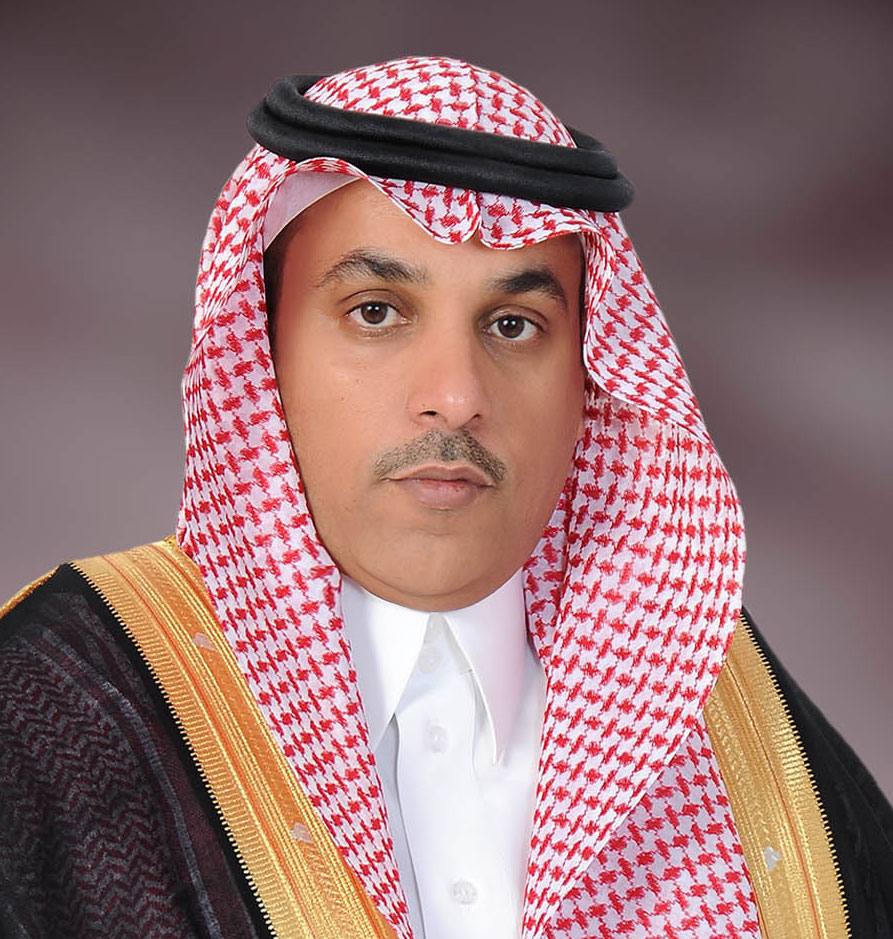
د. فهد التخيفي: الميزانية تعتمد " التخطيط المدروس " عنوانًا جديدًا للتنمية
Congratulating the Custodian of the Two Holy Mosques and his crown prince on announcing the largest budget in the history of Saudi Arabia
Dr.Fahad AL-Tukhaifi: the budget adopts an “organized planning’’ as a new approach for development
On his behalf and on behalf of all GASTAT’s employees as well as all the statistical sectors in Saudi Arabia, president of GASTAT, Dr.Fahad Bin Sulaiman AL-Tukhaifi congratulates the Custodian of the Two Holy Mosques King Salman Bin Abdulaziz and his crown prince HRH Prince Mohmmad Bin Salman Bin Abdulaziz on announcing the budget of 1440/1441 H as the largest expenditure budget in the history of Saudi Arabia. Moreover, it reflects the directions of the wise leadership in the country that helped to reduce the budget’s deficit by (4.2%) of GDP.
AL-Tukhaifi confirmed that the budget proves that organized planning is the adopted approach used for development in Saudi Arabia at the present time and for the future as well. In addition, numbers that were included in the budget were achieved by organized planning, remarkable procedures, and a clear vision and aim. He added that the speech of the Custodian of the Two Holy Mosques during the budget’s announcement emphasized the ongoing support to boost the economic growth in Saudi Arabia, enhance the expenditure’s quality, and to attain financial sustainability and balance. Moreover, this can be reached by accomplishing Saudi Arabia’s 2030 vision objectives through increasing the size of the national economy and keeping its growth. Also, by heading towards economic reform, financial management and control, enhancing transparency and enabling the private sector. The custodian of the Two Holy Mosques directs all officials to quickly start the implementation of the budget which reflects his constant concern that all government entities will be able to meet citizens’ expectations and moving from only providing services to surpassing in providing these services.
Dr. AL-Tukhaifi said:” the Custodian of the Two Holy Mosques concludes his words by affirming that the comprehensive development will continue and will cover all regions of Saudi Arabia and that is his main concern; this shows the commitment of the leadership that the development covers all the regions of Saudi Arabia and in all fields as well’’. On the other hand, GASTAT’s president confirmed that the parts included in the budget will guarantee an effective contribution to enhance the government expenditure, also to enhance the quality, accuracy and transparency of financial accounts. Therefore, financial efficiency level will increase and benefit of projects will be maximized and that will be reflected on what is obtained by the citizen from the outputs of these projects. May God protect this country and keep its safety and prosperity, he concluded.
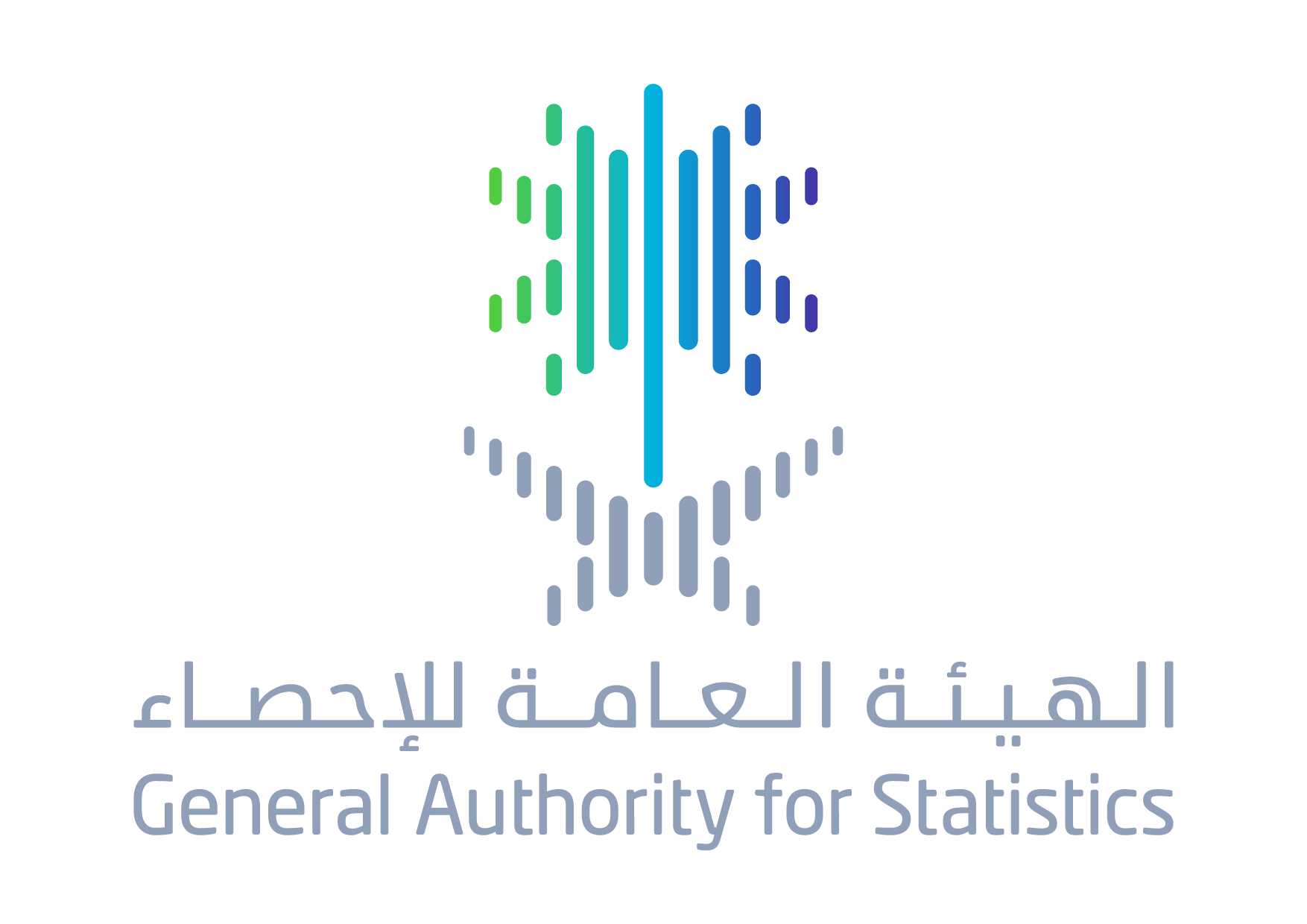
"الهيئة العامة للإحصاء " تصدر لأول مرة نتائج مسح النشاط الصناعي لعام 2017م
GASTAT Releases for the First Time Industrial Activity Survey's Results-2017
On Thursday, Rabi al-Thany 6th,1440 H (corresponding to December 13th ,2018), the General Authority for Statistics (GASTAT) released the results of the " Industrial Activity Survey for 2017" to support the national development. This Survey was carried out for the first time by GASTAT and is considered outputs of the statistical transformation in Saudi Arabia which have been started since the beginning of the last year. The Authority has released so far more than sixty-five statistical products including economic, social, demographic, and Umrah statistics. In addition to other statistics related to labor market, energy, knowledge, environment, culture, sport, entertainment, security and safety. The Industrial Activity Survey is an annual survey based on field data collected by visiting establishments all over Saudi Arabia's regions. The results of the Survey include more than nineteen statistical indicators related to the features and components of private and public sectors establishments. The Survey concerns the activities of mining, quarrying, manufacturing, electricity, gas, and steam supply, air conditioning, water supply, sanitation, in addition to waste management and process. The results also provide detailed and accurate data to meet the needs of the relevant parties in line with the international recommendations specialized in industrial activity surveys.
The Authority appreciated the role of all the relevant governmental and private entities that contributed to the design of the survey's form, and submitted their proposals according to the needs of data and information for the economic sector generally and industrial sector particularly. This is done through mutual team works and continuous workshops in order to ensure that the statistical product outputs have met all the requirements.
The results of the Industrial Activity Survey showed that the number of industrial establishments made up (112,785) one hundred twelve thousand, seven hundred eighty-five establishments, with 31% of Saudi workers.
According to the results, the operating expenses of the industrial establishments exceeded about (484.712 million) four hundred eighty-four billion, seven hundred twelve million SAR, whereas the value of the operating revenues of the industrial establishments reached in 2017 around (1,516,844,817,326) one trillion, five hundred sixteen billion, eight hundred forty-four million, eight hundred seventeen thousand, three hundred twenty-six SAR. The percentage of Saudi workers working at the following establishments: crude oil and natural gas, other manufacturing, as well as coke and refined petroleum products reached 84%, 80% and78% respectively out of the total number of Saudi workers in the industrial establishment, the results showed.
It is worth mentioning that GASTAT releases, in addition to the survey of industrial activity, a number of products related to the industry sector. Such as, index of industrial production survey which measures the relative change and any developments in the quantities of material and commodities production. Additionally, environment economic survey (industry) that reflects the norms of water and energy consumption in Saudi Arabia by the establishments and wastes resulting from these activities and potential ecological effects.
The Industrial Activity Survey is the third statistical product published by the Authority in the field of industry. It aims to provide comprehensive industrial statistics in different regions of Saudi Arabia, for instance: statistics and compensations of industry workers as well as operating and transfer expenses. In addition to the size, revenues value, and contribution to GDP of industrial production.
GASTAT has published the Survey's results, field research forms and others results on its official website www.stats.gov.sa . The products are in various information formats, so researchers, scholars and decision-makers can benefit from them and conduct data analysis.
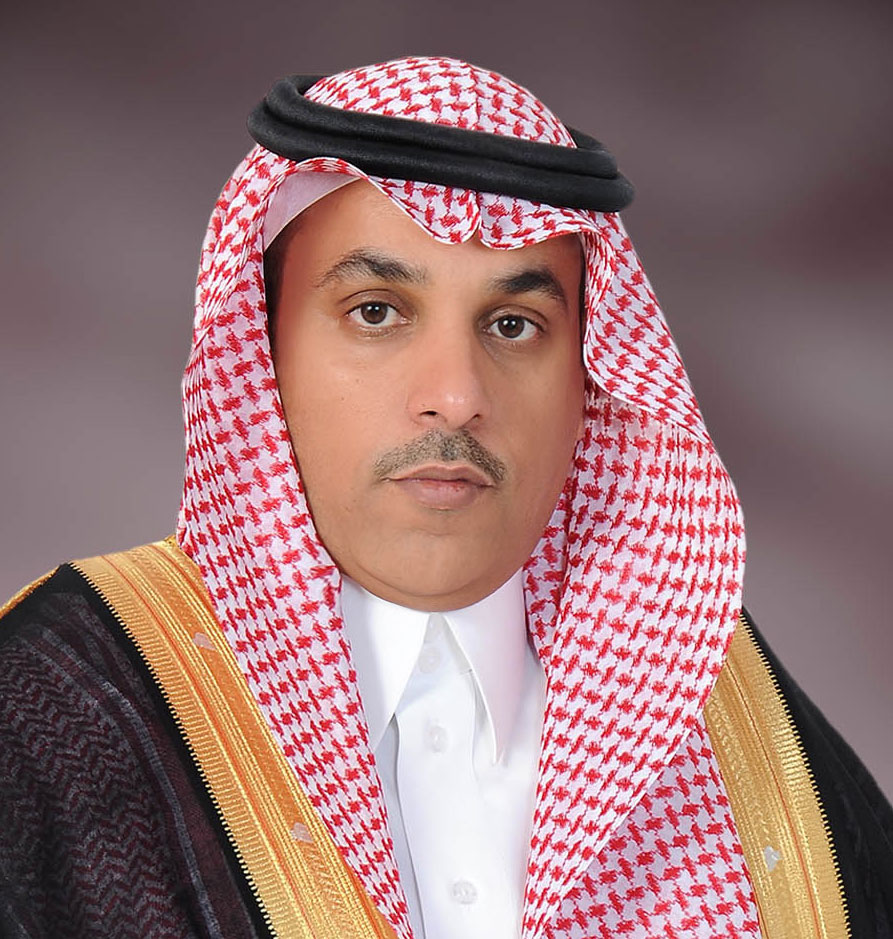
طويق وحكاية أربع سنوات في عهد "سلمان"
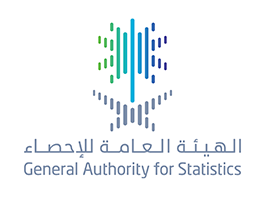
"الهيئة العامة للإحصاء " تصدر نتائج مسح الطاقة المنزلي عام 2018م
“GASTAT” Releases the Results of the Household Energy Survey for 2018
The General Authority for Statistics (GASTAT) released the results of the “Household Energy Survey (2018)” on its official website www.stats.gov.sa. It is a field survey that collects household energy data from a sample of households covering all 13 administrative regions across the Kingdom. This data can calculate many estimates and indicators about energy consumption in the domestic sector. The Household Energy survey aims at providing data related to the housing characteristics such as the type of housing, its components, the areas that are air-conditioned and heated, the impact of economic, social and geographical variables on energy consumption, household uses of fuel of all kinds to supplement the primary consumption coverage of various energy forms, which contributes to the preparation of energy balance, identifying patterns of energy consumption and the forms of energy used in the domestics sector.
The results of the household energy survey showed that (100%) of the households use electricity in their houses. (99.85%) of their houses are connected to the public electricity network. (0.11%) use a private network as a source for electricity, while (0.04%) use a generator as a source of electricity.
The results also showed that the percentage of households using solar energy at homes reached (1.45%).
The results also showed that the percentage of households using an independent electric meter reached (84.33%), while (15.67%) are using an electric meter shared with other houses, whereas (15.38%) use power regulator at home.
Regarding the use of fuel, the results showed that about (90.72%) of households use gas as the main fuel for cooking, while (8.74%) of households use electricity for cooking. In addition, (8.22%) of households use (wood, coal and agricultural waste) at home for heating and cooking.
Regarding the patterns and behavior of households in the rationalization of power consumption, the results showed that (59.84%) of households are interested in 65cutting expenses or
rationalization of power consumption. It also showed that (35.75%) of the households are likely interested in power consumption rationalization while only (4.41%) of the
households are not interested at all in cutting expenses or rationalizing power consumption. The results showed that (29.35%) of the households have power savers at their houses while (70.65%) of households don’t have power savers to rationalize consumption
Furthermore, the results of the Household Energy Survey showed that the total consumption of household fuel (fuel oil), kerosene and LPG reached more than 1 billion liters (1,023,585,906) in all regions of the Kingdom. The volume of consumption of diesel (fuel oil) reached about (3,519,261) three million five hundred thousand liters, which represents about (0.34%) total consumption volume, while the consumption of gas (kerosene) reached more than nineteen million L (19,691,996) representing about 1.92% of the total volume of consumption. The volume of consumption of gas (LPG) reached about one billion liters (1,000,374,649) in 2018, representing (97.74%) of the total volume of consumption.
The results of the Household Energy Survey showed that (35.14%) of households in the Kingdom spend less than 5% of their income on electricity and other sources of fuel, while (43.08%) of the households spend between (5-10%) on energy, while (15.76%) of households spend between (11-15%) on energy. (4.01%) of households spend between (16-20%) of their income on energy and (2%) Spends more than (20%) of its income on electricity and other fuel sources.
It is worth mentioning that the Household Energy Survey of 2018 is the second survey conducted by the General Authority for Statistics on an annual basis.
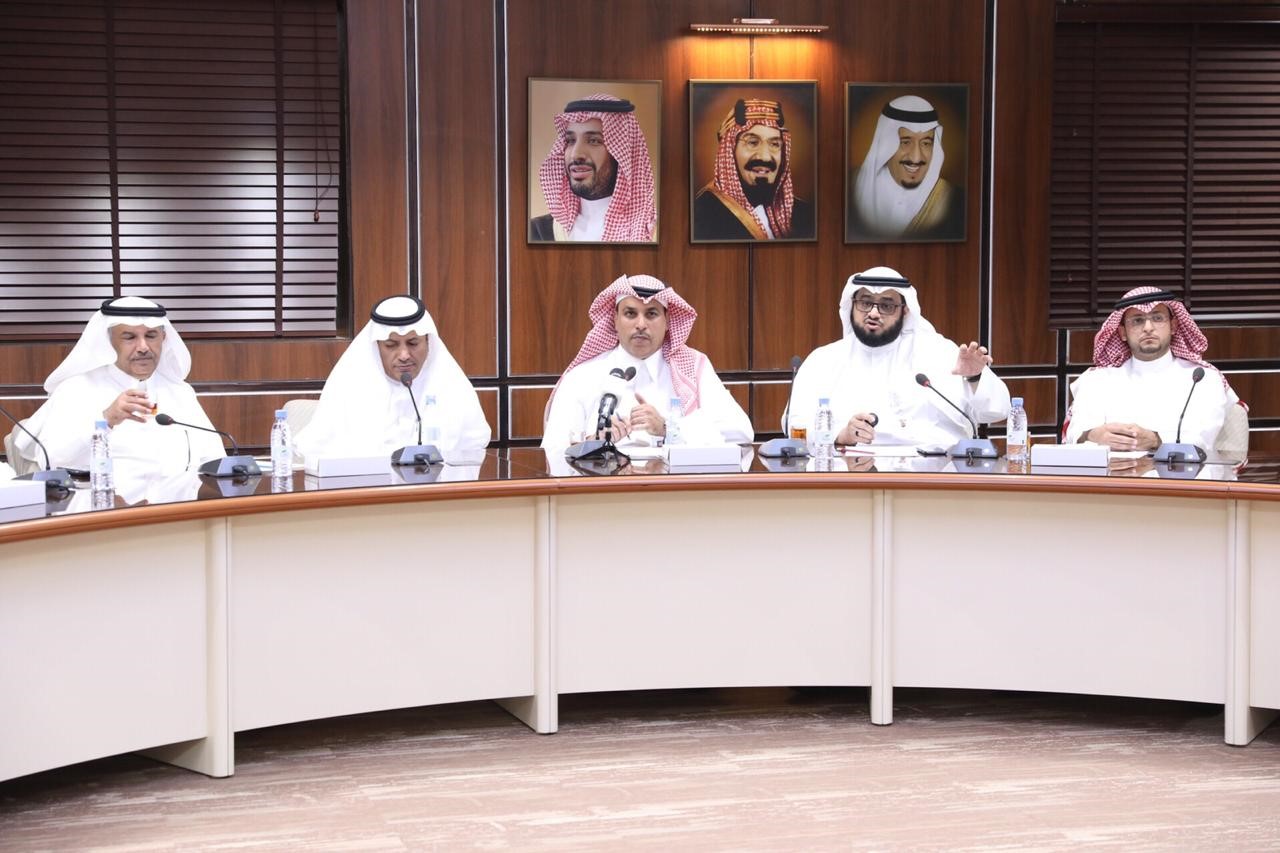
الهيئة العامة للإحصاء تختتم أسبوعها الاحصائي بمنطقة عسير
Within GASTAT efforts to raise statistical awareness among all society classes.
GASTAT concludes its awareness week in Aseer region
As part of its plan to raise statistical awareness among all society classes, the General Authority for Statistics (GASTAT) concluded the statistical week in Aseer region. The statistical week included the meeting of His Excellency the president of GASTAT, Dr. Fahad bin Sulaiman Altekhaifi with businessmen and the board members of Abha Chamber. During the meeting, they discussed the role of the private sector in the statistical process, in addition to the statistical products that are related to Aseer region.
“The Smart Statistician” exhibition has been also held during the statistical week in cooperation with the General Administration of Education in Aseer region. The exhibition events took place in “ Aseer’s Educational Center” during the period 17-21 Rabi Al Awal 1440H, with the participation of more than 35 schools.
The exhibition aims to clarify the role of statistics in the student life. In addition, it aims to explain the statistical concepts and raising the level of students’ awareness. Moreover, it presents the statistical process steps and stages in a simple and scientific way, and enhances the student’s realization of the statistician role. However, the exhibition demonstrates the impact of data accuracy (data provided by the household head) on development, as the student is considered an effective method in raising households’ awareness.
It is worth mentioning that the student journey inside the exhibition starts by moving between the different sections that provide students with scientific information in an entertainment and attractive way. The sections include an identification of statistics, the difference between statistics and mathematics, the role of the General Authority for Statistics, how students and households are relating to the authority work, and how statistical researches are implemented on the field through simulating the process by students, where a student takes the role of the “statistician” when he visits a household to fill an electronic form designed especially for the research. However, many awareness lectures were held in Khamis Mushait governorate during this week an attended by a number of the governorate schools’ students.
On the other hand, King Khalid University hosted the event of (We share you your academic journey) during the same period. This event targets university students, faculty members, and all university staff. It presents GASTAT statistical products and services, and explains how to use them for the purpose of conducting academic studies and research.
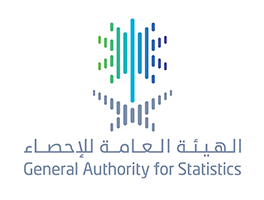
الهيئة العامة للإحصاء: انخفاض المؤشر الشهري للرقم القياسي لأسعار المستهلك خلال شهر أكتوبر 2018م وارتفاع المؤشر السنوي.
GASTAT: Consumer Price Index (CPI) Decreases and Annual Index Rises in October,2018
General Authority for Statistics GASTAT released its monthly report of CPI in Saudi Arabia for October. The report was published on its official website www.stats.gov.sa . The Consumer Price Index CPI decreased 0.3% in October compared to the previous month (September 2018).
GASTAT report showed that the Consumer Price Index CPI in Saudi Arabia decreased to (106.8) Index Points in October from (107.1) in September of 2018 with 0.3% change.
On the other hand, the report attributed the monthly decline of the index to the declines of the eight sections composing it, which are: housing, water, electricity and gas section with 0.8% , home furnishing and equipment section with 0.4%, clothing and shoes section with 0.3%, transportation section with 0.3%, personal goods and services section with 0.2%, health section with 0.1%, culture and entertainment section with 0.1%, and finally restaurants and hotels sections with 0.1%.
In contrast, two of the main sections witnessed an increase, which are: food and beverages section with 0.2% and tobacco section with 0.1%. Telecommunication and education sections remained stable with no change.
The year-over-year (YOY) of CPI registered an increase of 2.4% in October 2018 compared to the same month last year reaching (106.8) in October 2018 compared to (104.3) in October 2017.
The ten sections composing the CPI contributed to year-over-year increase, which are: transportation section 11.5%, tobacco 10.2%, restaurants and hotels 8.7%, food and beverages 7.3%, health 4.0%, culture and entertainment 3.2%, home furnishing and equipment 2.8%, telecommunication 1.4%, education 0.2%, personal goods and services 0.1%.
On the other hand, two of the main sections witnessed a decline, which are: clothing and shoes section with 5.0% as well as housing, water, electricity and gas section with 3.6%.
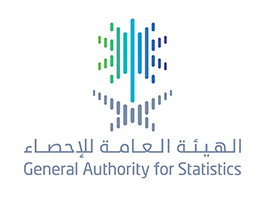
"الإحصاء" تُصدر نتائج مسح التجارة الداخلية للربع الثاني من عام 2018م
Number of Saudi Females Workers Increased in Internal Trade Activity
GASTAT Releases Internal Trade Survey Results Q2- 2018
The General Authority for Statistics (GASTAT) released on its official website www.stats.gov.sa the results of the "Internal Trade Survey for the Second Quarter of 2018". The survey is defined as a set of economic statistics and data that can be used for short-term to measure the performance of the trade sector in order to assess its growth, and identify its strengths or weaknesses.
Moreover, it is an important economic activity that contributes to expand employment and raise GDP, exactly like the retail activity. This activity connects producers with consumers, and focusses on the features and components of establishments engaged in the activities of vehicles sale and repair as well as wholesale and retail sale trade.
The survey showed that the number of Saudi females workers of the internal trade activity establishments increased by 2%, compared to the previous quarter. The workers’ number of internal trade sector in Saudi Arabia reached about one million six hundred eighty-five thousand workers by the end of the second quarter of 2018, including almost one million two hundred fifty thousand non-Saudi workers. However, the number of Saudi workers of the same sector was approximately four hundred thirty-four thousand workers.
The employees of the retail trade made up (1,054,460) one million, fifty-four thousand, four hundred sixty workers, including (771,650) seven hundred seventy-one thousand, six hundred fifty non-Saudi workers. However, the number of Saudi employees in this activity was (282,810) two hundred eighty-two thousand, eight hundred ten workers, the survey showed.
The results of the survey also indicated that the total operating revenues(sales) of the internal trade sector during the second quarter of the current year 2018 amounted to around (148,987 million) one hundred forty-eight thousand, nine hundred eighty-seven million riyals. Nonetheless, the total operating expenses of the sector during the same period recorded about (89,312 million) eighty-nine thousand, three hundred twelve million riyals. Therefore, the operating surplus of the three sector activities during the first quarter of 2018 was about (48,052 million) forty-eight thousand, fifty-two million riyals.
Based on the data of the survey, the operating surplus of the wholesale trade was the highest among all the activities of the internal trade, where its number was about (18,928 million) eighteen thousand, nine hundred twenty-eight million riyals during the second quarter of the current year 2018. On the other hand, the operating surplus of the retail trade activity reached around (15,72million) one thousand, five hundred seventy-two million riyals. Finally, the operating surplus of the sale and repair of motor vehicles and motorcycles activity accounted to almost (13,401 million) thirteen thousand, four hundred one million riyals.
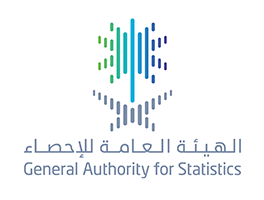
" الإحصاء ": متوسط الأجر الشهري للمشتغلين السعوديين في أربعة قطاعات : 10.238 ريال
Included the whole salary “basic, allowances, bonuses, overtimes, and other compensations”
GASTAT: Saudi Workers Monthly Average Wage in Four Sectors: 10.238 SAR
The General Authority for Statistics (GASTAT) spokesman, Taiseer Almofarrej said that according to the labor market bulletin of the second quarter, 2018, the average monthly wage of Saudi workers who get paid for their work in four sectors; public sector, private sector, non-profit organizations, international and regional agencies, and other sectors reached (10.238) SAR. Regarding the calculation method of this average, Almofarrej stated that it was measured based on estimating the average wages of all Saudis (males and females) in the above mentioned four sectors either inside Saudi Arabia or outside it, in addition to the wages of workers in other sectors which were taken from the field survey that GASTAT conducts quarterly by asking households about their monthly wages.
Almofarrej indicated that the wages about which households are asked differ from the wages registered in the administrative records of the different sectors, where the head of the household disclose the monthly wage for any work which may not include a job salary or any related allowances or bonuses. However, Almofarrej said that the average wages of Saudis (males and females) who work in these sectors registered (11.198 SAR) in the public sector, (7.339 SAR) in the private sector, (4.750 SAR) at non- profit organizations, and (16.257 SAR) in the other international and regional agencies and sectors.
As for the difference between the statistics issued by GASTAT and the ones issued by other entities such as GOSI, Almofarrej illustrated that the statistics issued by GOSI represent the basic salary average registered by the employer. They do not include any additions such as allowances, compensations, or bonuses. Therefore, it is normal to have an average that is less than the average derived from the answers of households’ heads in the field survey based on which GASTAT issue its statistics.
Regarding the reasons why the Bulletin of the labor market revealed statistics that were not shown in previous years, Taiseer Almofarrej confirmed that what was issued earlier is the results of the Labor Force Survey, this is the results of the fieldwork that GASTAT conducts every quarter. Since the results of the fourth quarter of 2016, GASTAT has begun to issue a more comprehensive release under the name "Bulletin of the labor market." What distinguishes the bulletin is that it is an integrated work between government institutions (the General Authority for Statistics, the Ministry of Labor and Social Development, the Ministry of Civil Service, in addition to the National Information Center (NIC), the results of the field survey and the registered data provide a panoramic and comprehensive picture of the labor market. As a result of this statistical integration, the Bulletin contains a large number of detailed data on employees according to the rules and regulations to which they are subject, Gender, age, administrative region, and educational level. It also includes data of jobseekers, average monthly wages, working hours, and domestic workers. The aim is to support policy and decision makers.
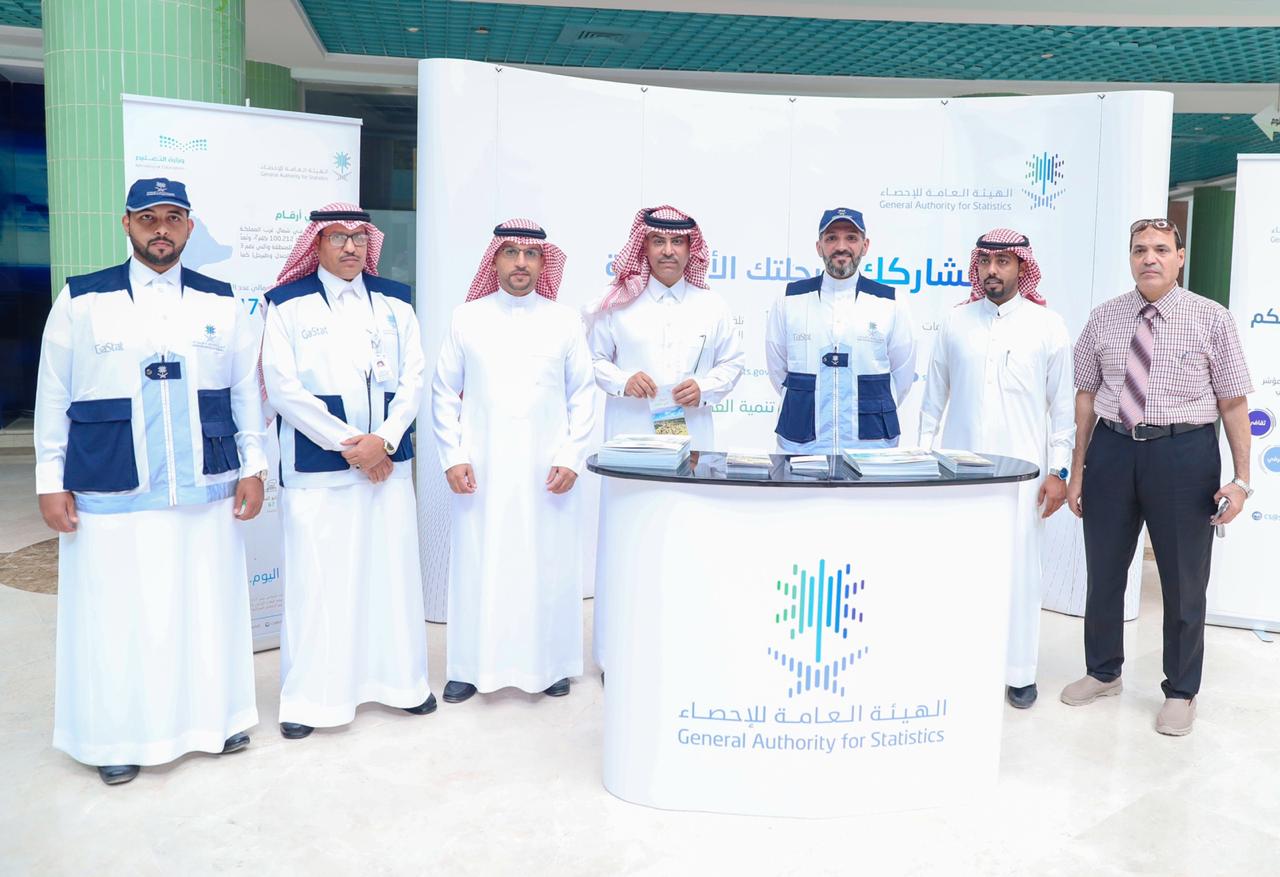
الهيئة العامة للإحصاء تطلق أسبوعها التوعوي لطلبة التعليم العام والعالي بمنطقة الجوف
GASTAT Launches its Awareness Week for Students of General and Higher Education in Al-Jouf Region
As part of its plan to raise statistical awareness among all segments of the society, including the students of general education and higher education, the General Authority for Statistics (GASTAT) organized the "Smart Statistician" exhibition in cooperation with the General Directorate of Education in Al-Jouf Region. The exhibition will be held at Al-Sudairiya School in Sakaka city, during the period from 20th to 24th of Muharram 1440 AH, where more than 70 schools from the region were invited to visit and participate.
The exhibition, which is intended for students in the upper grades of the primary and intermediate levels, aims to highlight the importance of statistics in the life of the student, introduce the most important concepts related to statistics, help students in reaching a high level of awareness of the importance of statistics, as well as the steps and stages of the statistical process in a scientific and exciting way. In addition, it enhances the students' understanding of the role of statistical systems, the statistical field researchers and the impact of the accuracy of data provided by (households and establishments) on development in all its fields, considering that the student is an influential media in the family as he transfers everything that he learns in school to his family.
The exhibition starts its activities with an introductory video. The student will begin to move among the sections that contain scientific information presented in a fun and entertaining way by learning about statistics, the difference between statistics and mathematics, the role of the General Authority for Statistics, how to carry out field statistical research through a practical experiment conducted by the student by playing the role of a "statistical researcher" and visiting a household using the electronic form of field research, to simulate the reality of statistical researcher.
The exhibition, which opens from 9 am to 1 pm during the week, includes a number of shows and competitions, such as the competition of regions and numbers, which aims to identify the population of the regions, the statistical signs competition, which aims to enhance the student's understanding of its importance in the census and statistical surveys in general.
On Wednesday, Muharram 23rd, 1440 AH, GASTAT will also present a lecture on the importance of statistics hosted by Dumat Al-Jandal Intermediate School in the presence of a number of students from the governorate schools. On the other hand, in the same period, Al-Jouf university will hold the event of (We are with you in your academic trip). In this event, an awareness booth will be set up to introduce all university students, faculty members and employees at the university with GASTAT products, statistical services and how to obtain them and benefit from them in research and academic studies. The event will conclude with an awareness lecture to be held at the University Theater on Thursday, 24th of Muharram, during which the students will be introduced with the role of the college student in the development as well as their role in spreading of awareness among the society.
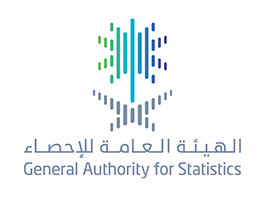
الهيئة العامة للإحصاء: ارتفاع الرقم القياسي العام للإنتاج الصناعي للربع الثاني 2018م
GASTAT: Index of Industrial Production Increased during the Second Quarter of 2018
On its official website www.stats.gov.sa , GASTAT released the results of the industrial production survey for the second quarter of 2018. This survey measures the relative change or any developments in the quantities of commodities and material production.
The survey results indicated an increase by 4.17% in the industrial production index during the second quarter of 2018, compared to the first quarter of the same year. The index registered 137.87 points during the second quarter, 2018.
As for the industrial production index activities, the mining and quarrying indicator rose by 1.89%, whereas the manufacturing production increased by 5.07%. However, the production of the electricity and gas supply registered an increase with 83.46% when compared to the first quarter of 2018.
The results also showed an increase by 5.84% in all industrial activities compared to the second quarter of 2017. The growth in mining and quarrying production reached 1.95%, while the manufacturing production growth registered 16.44%. However, the production of electricity and gas supply decreased by 0.30%.
In this context, industrial production means transforming raw material (inputs) into consuming material in its final shape as (outputs) so that the producing establishment may gain a profit in return. On the other hand, the extractive industries mean raw material extracted from the ground. They depend on non-renewable natural resources such as oil and mining. However, manufacturing concerns all industries whose activity is all about transforming raw material into final products or intermediate products.
It is worth mentioning that the idea of index means the measurement of any change in a given value during a specific period of time called the comparison period which compares the values during different periods of times. The Industrial Production Index is considered the fourth statistical product that GASTAT conducts as an index. It is conducted after Consumer Price Index, Wholesale Prices Index, and Real-estate Prices Index.
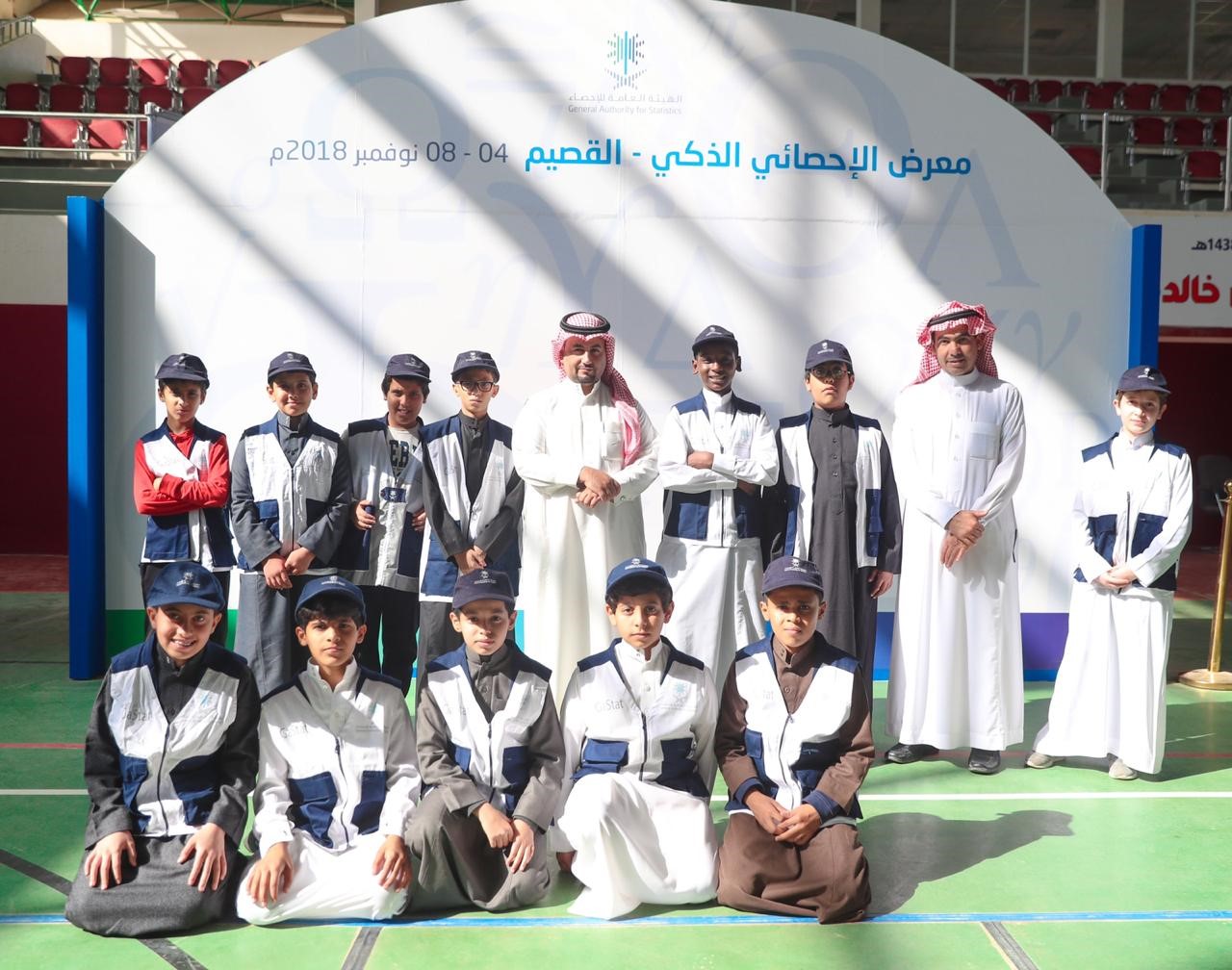
طلاب وطالبات القصيم يشاركون في معرض الإحصائي الذكي
Within GASTAT’s plan to raise statistical awareness among all society classes
Qassim's Students Participate in Smart Statistician Exhibition
The General Authority for Statistics (GASTAT), in cooperation with the General Directorate of Education in Qassim, organized the “Smart Statistician Exhibition” as a part of its plan to raise statistical awareness among all society classes, including the students of general and higher education. The exhibition was held at the student’s house in Buraydah Region during the period 26-29 Safar, 1440H with participation of more than 30 schools in the region to visit and participate.
The exhibition targeted the students in the higher classes of primary and intermediate school. It aims at clarifying the role of statistics in the life of students, in addition to explaining the statistical concepts, and raising the level of students’ awareness. Moreover, it presents the statistical process steps and stages in a simple and scientific way, and enhances the student’s realization of the statistician role. However, the exhibition demonstrates the impact of data accuracy provided by (establishments and households) on development, as the student is considered an effective method in raising households’ awareness.
In the beginning of the exhibition, the students were asked to view an introductory video featuring statistics in general, then they visited the sections of the exhibition which contain significant information presented in an entertainment way. The sections include information on the difference between statistics and mathematics, GASTAT’s role, and the role played by the student and household in the Authority’s work. Additionally, the students learned the procedures of conducting filed statistical research through a practical experiment, where the student embodied the role of the “statistician”, and visited a household using an electronic form of field research in order to simulate the reality of being statistician.
The exhibition opens from 9:00 am to 1:00 pm during weekdays. It involves a number of competitions, such as “Regions and Numbers Challenge”, to know the number of the region’s population, and the competition of “Statistical Signs” to boost the student's understanding of the importance of such signs in conducting census and statistical surveys.
GASTAT also gave an awareness lecture on the importance of statistics hosted by the Department of Education in Unayzah Region in the presence of many students of governorate’s schools. However, during this week, Qassim University hosted the event of (We Share You Your Academic Journey) which targets university students, faculty members, and all university staff. This event presents the statistical products and services of the Authority, and explains how to use them to conduct academic studies and research.
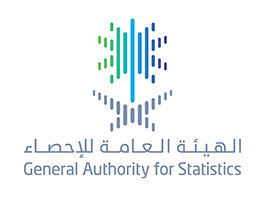
الهيئة العامة للإحصاء: ارتفاع عدد المشتغلين السعوديين في منشآت القطاع الخاص بنسبة 5.7%
GASTAT: Number of Saudi Workers Working at Private Establishments Rose to 5.7%
On Wednesday 29/2/1440 H corresponding to 7/11/2018 , GASTAT released the results of the “Economic Indicators Survey (Q2, 2018)” on its official website www.stats.gov.sa . The results provide short-term indicators about the number of workers by gender and nationality as well as the paid compensations, operating expenses and operating revenues as a periodical study that focuses on the features and the components of the working institutions practicing one economic activity or several economic activities in public and private sectors.
The results of the survey showed that the total number of workers working at private establishments increased by 3.6% compared to the same quarter of 2017. It also showed an increase of 5.7% in the total number of Saudi workers working at private establishments compared to the same quarter of 2017.
In addition, the total paid compensations of workers working at private establishments rose to 8.9% compared to the same quarter of 2017, results showed.
According to the survey’s results, the total operating expenses of private establishments increased by 10.2% compared to the same quarter of 2017. The total operating revenues of private establishments also increased by 9.9% compared to the same quarter of 2017.
Economic indicators are a set of economic statistics and data which can be used as a short-term plan to measure the performance of the various economic sectors in order to evaluate the economic situation and to identify the strengths and weaknesses of economy.
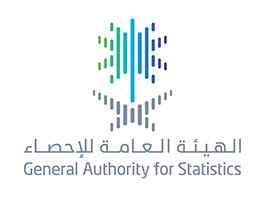
الإحصاء: ارتفاع في نصيب الفرد من الناتج المحلي الإجمالي والحساب الجاري لميزان المدفوعات ومؤشر الادخار الإجمالي للربع الثاني لعام 2018م
Three Economic Indicators Suggest an Economic Growth
GASTAT: Per Capita GDP, Current Account of the Balance of Payments and Total Savings of the 2nd Quarter of 2018 Increased
On its official website www.statts.gov.sa , GASTAT published three economic indicators which are: GDP per capita for the 2nd quarter (2018), the surplus or deficit in the current account of the balance of payments for the 2nd quarter (2018), and the total savings index for the second quarter of 2018.
Furthermore, per capita share at current prices reached (21.997) riyals with an increase of (14.91%) compared to the 2nd quarter of 2017. On the other hand, GDP per capita reached (22.272) riyals for the 2nd quarter of 2018 with an increase of (14.20%) compared to the same quarter of the previous year.
The above-mentioned indicator reflects the individual’s ability to obtain consuming goods and services, shows the average income per capita in Saudi Arabia on a quarterly basis, also it can be used to measure the economic development around the world and to compare between countries as well, GASTAT clarified.
In regard to surplus and deficit in current account for the 2nd quarter of 2018, the current account indicator of the balance of payment achieved a surplus amounted to (9.82%) to GDP during the 2nd quarter of 2018; and the deficit was (3.24%) in the current account of the balance of payments in the 2nd quarter (2018).
GASTAT also published the total savings indicator for the second quarter of 2018 where it reached 242 billion and 497 million riyals with an increase of (29.13%) compared to the same period last year 187 billion and 793 million riyals. The total savings rate to GDP edged up to (33.09%) in the 2nd quarter of 2018 compared to (30.18%) in the same period of the previous year.

انعقاد الاجتماع الثالث لِلَّجنة التنسيقية الدائمة بمشاركة 17 جهة حكومية
To develop the statistical departments
The coordination committee is holding its third meeting with 17 governmental entities
The third meeting of the coordination committee was held on Wednesday 21/2/1440H corresponding 31/10/2018 at the General Authority for Statistics (GASTAT) head office to facilitate the exchange of data and information with various government agencies.
The official spokesman of the General Authority for Statistics (GASTAT), Taiseer Almofarrej, explained that the coordination teams discussed several topics, including the program of developing the statistical departments which aims at establishing organizational rules and fundamentals to found statistical departments in the governmental entities. Furthermore, it aims to build an official statistical system and to make the statistics, information, and indicators basic parts of the governmental work to enhance the quality of statistical work in Saudi Arabia. The mechanism of classifying government statistical units was also discussed in the meeting. Moreover, the committee reviewed the statistical works carried out during the last period.
On the other hand, Almofarrej said that the coordination committee of the General Authority for Statistics includes a number of representatives including the Saudi Arabian Monetary Agency , General Authority for Investment, Ministry of Health, Ministry of Environment, Water and Agriculture, Saudi Customs, Ministry of Housing, Ministry of Trade and Investment, Ministry of Education, Ministry of Justice, Ministry of Municipal and Rural Affairs, Ministry of Finance, Ministry of Energy, Industry and Mineral Resources, Ministry of Communications and Information Technology, Ministry of Labor and Social Development, National Information Center, Ministry of Economy and Planning, and Saudi Post.
It is worth mentioning that the coordination committee was formed permanently to coordinate the statistical work between the General Authority for Statistics and related entities, in accordance with the Ministers Cabinet resolution number (11) dated 13/1/1437 H of the authority organization, which aimed at activating and organizing the statistical work through the establishment of a comprehensive, accurate and unified statistical system, in addition to the follow-up of its implementation. It also develops the plans and programs necessary for fulfilling statistical needs; in order to serve the developmental plans, scientific research, and other activities.
GASTAT: Real-Estate Prices Index Decreased During Q3, 2018
The index includes housing, commercial and agricultural sectors
GASTAT: Real-Estate Prices Index Decreased During Q3, 2018
The General Authority for Statistics (GASTAT) released the report of Real Estate Price index for the third quarter, 2018 on the official website of the Authority www.stats.gov.sa
The real-estate price index has recorded a decline by (1.6%), compared to the previous quarter Q2 2018, where the indicator of the real estate price index reached (82.3) in the third quarter of 2018, compared to (83.6) in the second quarter of 2018. This decline can be attributed to the decrease in the main sectors composing the indicator: the housing sector (2.1%), the commercial sector (0.5%), and the agricultural sector (0.1%) compared to the second quarter of the current year.
At the level of the housing sector, the third quarter of 2018 witnessed a decline in residential lands by (2.1%), compared to the previous quarter, where the villas, apartments and houses decreased by (1.4%), (2.0%), and (0.3%) respectively. On the other hand, residential buildings increased by (0.2%). Regarding the commercial sector, commercial plots decreased by (0.5%), compared to the previous quarter. However, the agricultural sector witnessed a decrease by (0.1%) in agricultural lands.
Additionally, the index is based on the data records about real-estate’s transactions available at the Ministry of Justice, and it is an important tool to support economic and statistical decision makers regarding the changes of property prices and future forecasts during different periods of time. The index has three main sectors consisting of several types of real estate: housing sector which includes the following (plot of land, building, villa, apartment and house), commercial sector includes (plot of land, building, exhibition/ shop or commercial center), and the agricultural sector with only one category which is the agricultural land.
It is worth mentioning that the real estate price index aims at finding accurate real estate statistical indicators that measure real estate market in Saudi Arabia according to universally recognized scientific norms and standards, and filling the gap of data in real estate sector. It is considered an essential tool to support entities which make economic decisions in this field, and to contribute to a development process in the real estate sector in order to achieve the vision of 2030.
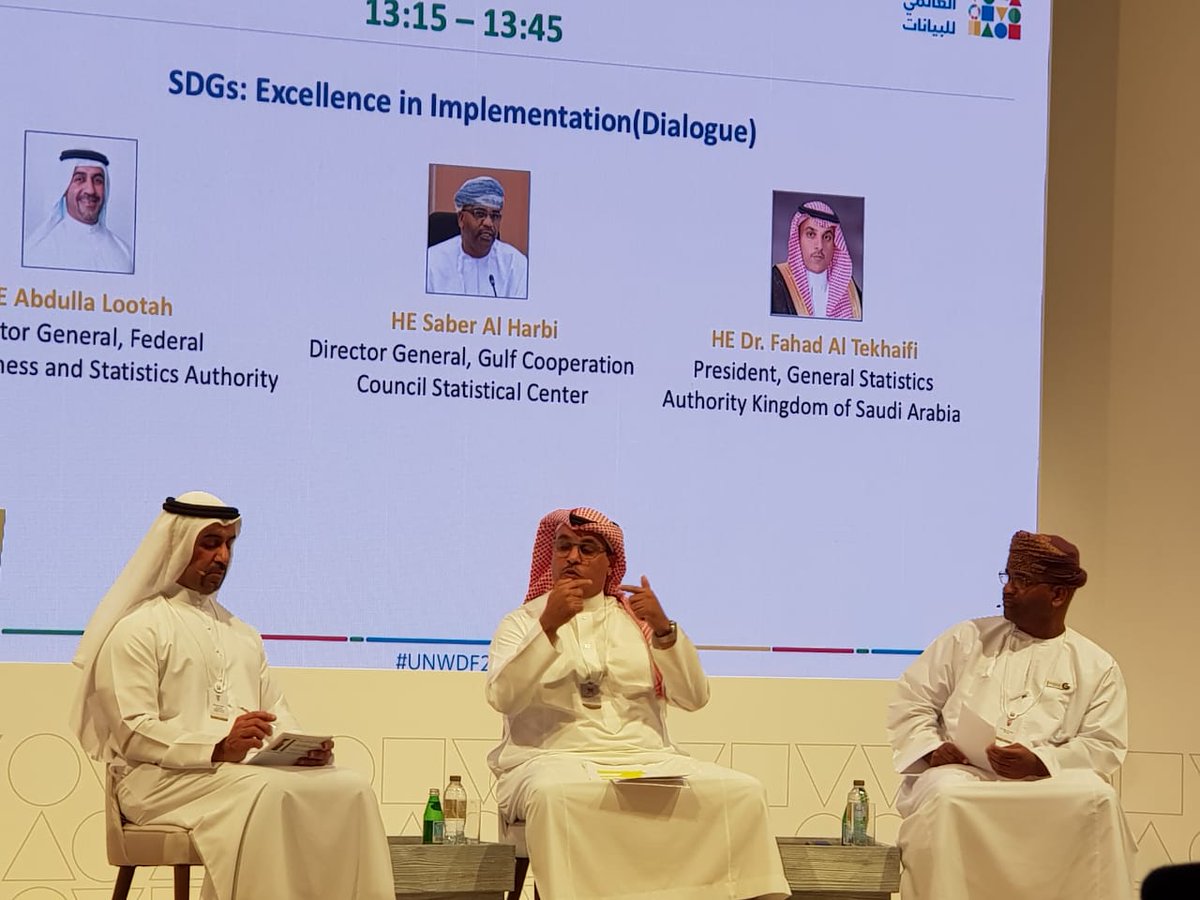
التخيفي: المملكة تسعى لتكون من أوائل الدول عالميًا في تحقيق أهداف التنمية المستدامة من خلال بناء مؤشرات إحصائية وتطوير سياسات تنموية
During the Second UN World Data Forum
Al Tekhaifi: Saudi Arabia seeks to be one of the first countries in the world to achieve the Sustainable Development Goals through building statistical indicators and creating development policies
The General Authority for Statistics (GASTAT) concluded its participation in the second United Nations Data Forum hosted by the United Arab Emirates from 22 - 24 October 2018, under the patronage of H.H. Shaikh Mohammed bin Rashid Al Maktoum, the Vice President and Prime Minister of the United Arab Emirates and the Ruler of Dubai. The forum was held with the participation of a group of leaders, decision-makers and more than 2500 experts and specialists in the field of data from more than 120 countries in the world.
H.E. Dr Fahad Al Tekhaifi, the President of the General Authority for Statistics, congratulated the Federal Competitiveness and Statistics Authority in the United Arab Emirates on the success of hosting this international statistical event. He praised the achievement of the session’s goals through the wide participation of the countries, organizations, government systems, and research and academic society. Al Tekhaifi stressed that the participation of GASTAT in the UN World Data Forum of 2018 – which is held for the first time in the Gulf region in Dubai – comes within GASTAT plan to benefit from the best international practices in the data field, communicate with the international organizations and strengthen the partnerships with them. In addition, the topics of the forum are one the important topics for all statistics systems especially in view of the transformation in the region from depending on gas and oil to an economy based on diversity for a sustainable development. The three-day forum discussed the exploitation of the information revolution for a sustainable development. Moreover, the forum discussed improving the use of data and statistics to achieve change towards a better future for human societies in line with the Sustainable development goals 2030.
GASTAT president pointed that Saudi Arabia presented its first voluntary national report at the high-level political forum concerned with the sustainable development last July at the UN headquarters in New York despite it being voluntary, believing in the importance of pioneering in sustainable development for the national, regional and global transformation. Saudi Arabia has made rapid progress in achieving the goals of sustainable development, which confirms the keenness of the leadership on this, led by the Custodian of the Two Holy Mosques King Salman Bin Abdul Aziz Al Saud, His Royal Highness Prince Mohammed bin Salman bin Abdulaziz, Crown Prince, Deputy Prime Minister and Minister of Defense. Saudi Arabia as a member of the United Nations General Assembly seeks to be one of the first countries to achieve the Sustainable Development Goals. Since the adoption of the goals, Saudi Arabia developed work mechanisms to ensure that the Sustainable Development Goals are aligned with the 2030 Saudi Vision as well as other national strategies and programs. Saudi Arabia developed a clear governance for the responsibilities and roles assigned to all relevant government sectors. GASTAT is considered the official body for building the indicators of sustainable development in Saudi Arabia.
Al Tekhaifi explained through his participation in one of the forum sessions that Saudi Arabia dealt with the sustainable development as goals and indicators in an effective way through three parallel tracks (Legislative, coordination, and technical). In the legislative track, a Royal Decree was issued assigning His Excellency the Minister of economy and Planning, the Chairman of the Board of Directors in GASTAT, to follow-up the profile of sustainable development goals beyond 2015. In addition, the Ministers cabinet approved the organization of GASTAT as the only official reference to implement the statistical work in all fields, as well as the entity responsible of producing statistical data and information at the national and international level. In the coordination track, a number of Statistics’ coordination committees have been formed with the participation of relevant government entities in different social, economic and environmental fields. In the technical track, GASTAT works with the participation of government entities on the national statistical data program “Masdar” which is a program that aims to to build a comprehensive national statistical database in which all statistical data from various internal and external sources are gathered to produce the categories, indicators and analyses needed by data users and analysts inside and outside the GASTAT to use it as a statistical reference to support decision making and the development of various development plans.
It is worth mentioning that the UN World Data Forum is a global platform for official statistics, and a collaborative environment for research and development of this area, using working models of global task forces for a number of statistical projects, in partnership with technology companies, data providers and academia in order to invest the digital data as inputs in the production of a reliable statistics, and make it available to serve the community in various fields.
GASTAT: More than 278 thousand prayers,107 thousand circumambulations of the Kaaba every hour and 42 scientific study and research to support the development
More than 10,000 Employees Provide Services in the Two Holy Mosques for the Guests of Allah
GASTAT: More than 278 thousand prayers,107 thousand circumambulations of the Kaaba every hour and 42 scientific study and research to support the development
On Saturday, 7th of Dhul Hijja 1439H. ,In the Hajj statistical calendar, GASTAT released the number of prayers and Kaaba circumambulations in the Holy Mosque of Makkah by hour. The number of prayers in the Holy Mosque of Makkah exceeded 278,000 in every hour, whereas the number of circumambulations of Kaaba exceeded 107,000 in every hour. In the Hajj season, these people are served by more than 10,000 employees from the General Presidency for Two Holy Mosques Affairs around the clock. The employees are supported by 54,501 machinery and equipment to provide cooled Zamzam water in locations near prayers, Hajj and Umrah performers inside the two holy mosques and the holy places.
In addition, 2000 tons of Zamzam water is pumped in the Holy Mosque of Makkah, 300 tons in the Prophet’s Mosque in Madinah on a daily basis. Moreover, the General Presidency for Two Holy Mosques Affairs prepares 25,000 (Zamzam thermoses), which are filled daily and around the clock to facilitate the prayers and pilgrims drinking process. Furthermore, the Presidency provides multiple types of carts for people with special needs for free. It provided more than 13,650 carts, including 700 electric carts. The various work teams in the presidency provide comfort for pilgrims to perform their tasks easily and supervises the performance of the imams (leaders in prayers) and Muazzins who call to prayers. 20 Muazzins call for prayers, and 10 imams lead prayers alternately. Their speeches are organized, recorded in tapes and CDs, and indexed. In addition, the work progress is monitored inside the organization and its units to ensure that the regulations and procedures are adopted in a comprehensive manner, and to contribute to the guidance and counselling as well as providing Tawaf services (circumambulations of Kaaba) for men and women, where there are more than 123 guides in the areas of the Holy Mosque.
The Presidency takes care of the mosque areas, provide the Holy Quran, translate and transmit the meanings of the Holy Quran into the languages of: (English, French, Urdu and Malay), and work on the safety of the people visiting the mosque as well as the people who serves the visitors. In addition, it supervises the cleanliness of the two holy mosques and their care around the clock, guards the doors of the Two Holy mosques and organises its opening, follows up the manufacturing stages of the Kaaba covering by supervising the King Abdulaziz organization of Kaaba covering, contributes to the safety and comfort of the Holy Mosque visitors in cooperation with the security authorities and the departments working in the Holy Mosques. Moreover, the presidency monitors the crowded places and follows up the observations concerning the crowds in all sites of the Holy mosque.
On the other hand, The Institute of Hajj and Umrah Research provides (42) research and scientific studies in order to develop an integrated and sustainable system for Hajj, Umrah and visiting. The institute tasks focus on conducting scientific studies and research that aims at facilitating the performance of rituals and providing better services to pilgrims and visitors of the Two Holy Mosque. This is done through studying the current conditions, collecting detailed data and information about various aspects of Hajj and Umrah and visiting, the needs and requirements of pilgrims, Umrah performers and visitors and the services and facilities provided to them, in order to obtain a clear picture of the prevailing situation, and then to develop its pros and overcome the disadvantages. The most prominent research and studies that the institute works on this year (1439H.) are: an analytical study for the periods of the procedural stages that the pilgrim faces since his/her arrival to the air-port until arriving to his/her residence, simulation of the Tawaaf System, demographic statistics on pilgrims and Hajj performers for the year 1439H., interactive touch screen technology in awareness and guidance during Hajj, the role of the public relations’ publications in health education for pilgrims of different nationalities, The role of the Saudi embassies in educating guests in the Holy Mosque for the year 1439H, evaluating the health environment of the prayers in the Holy Mosque (1439H), various means of transportation between the holy, the monitoring of the religious guidance locations in the Holy Mosque and the Prophet's Mosque and its role in the religious awareness of the Umrah pilgrims, the media inspection of the awareness publications provided to the pilgrims and its impact on their religious and behavioural awareness, and the role of embassies in raising the awareness of the guests with the lawful behaviours.
The Hajj statistical Calendar (1439H), issued by GASTAT, contains details of these statistics, according to the entities, and can be found on its official website www.stats.gov.sa
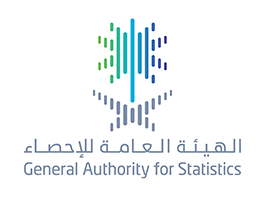
الهيئة العامة للإحصاء تصدر نتائج مسح المال والتأمين 2017م
With total operating revenues of 162 billion SAR
GASTAT Releases the Results of the Finance and Insurance Survey 2017
The General Authority for Statistics (GASTAT) released the results of " Finance and Insurance Survey (2017) " , which conducted annually by the Authority, on its official website www.stats.gov.sa . This survey is an important source for presenting and analyzing the economic data of finance and insurance establishments, such as employees, compensations paid to them, other expenses, revenues and capital formations.
The survey results showed that the number of establishments engaged in the finance and insurance activity increased by 1.14% in 2017, compared to the previous year 2016. However, the total number of establishments engaged in the finance and insurance activities amounted to 6,664 establishments distributed among 14 sub-activities. The sub-activities include banking and holding companies, financial leasing, other loan- granting forms, insurance, financial market management, securities contracts, insurance agents and brokers, money management as well as other activities.
Furthermore, finance and insurance survey results revealed that the total number of employees in this sector reached 113,728 employees, where 82,308 of them are Saudi employees and 31,420 are Non-Saudi employees. Therefore, the number of Saudi employees in finance and insurance establishments increased by 3.32% during 2017 compared to the previous year 2016.
According to the finance and insurance survey results, the total amount paid to finance and insurance establishment's employees for wages, benefits and allowances made up 22 billion and 920 million SAR during 2017.
Additionally, the results of the survey indicated that the operating revenues of the establishments engaged in the finance and insurance activity increased during 2017 by 10.3%, compared to the last year 2016. It should be noted that the total number of revenues reached about 162 billion SAR, while the total number of operating expenses of these establishments was approximately 47 billion and 312 million SAR in the year of 2017.
The finance and insurance survey was conducted based on an evident methodology according to the international standards. The methodology is to study the establishments that carry out their main operations in finance and insurance field in private and public sectors.
It is worth mentioning that the finance and insurance survey is important in providing detailed data on finance and insurance activity at the level of Saudi Arabia. These data contribute to measuring the participation of this activity in the economic development process, in addition to providing the basic data necessary for preparing and composing national accounts.
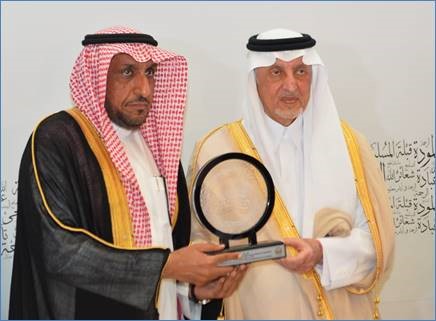
مستشار خادم الحرمين الشريفين يكرم الهيئة ضمن شركاء النجاح
The Advisor of the Custodian of the Two Holly Mosques Honors GASTAT as One of the Success Partners
The Advisor of the Custodian of the Two Holy Mosques, Prince of Makkah Region, Chairman of the Central Hajj Committee, Prince Khaled Al-Faisal has honored the General Authority for Statistic (GASTAT) as one of the (success partners) for the Hajj campaign " Pilgrimage is Cult and Civilizational Behavior 11", under the slogan " Hajj is a message of peace "headed by, Mr. Fahd Al-Fuhaid GASTAT deputy of operations and methodologies.
This was during the inauguration of His Highness the Hajj campaign in Jeddah Emirate, with the participation of 30 entities representing the public and private sectors. Additionally, the Hajj campaign "Pilgrimage is Cult and Civilizational Behavior 11" works on the implementation of its plan in the current season in order to provide peace among pilgrims through four stages.
It is worth mentioning that GASTA works during Hajj Season on the enumeration process of pilgrims coming from inside Saudi Arabia through many statistical centers located over Makkah, Madinah and Jeddah ports, in order to provide statistical data that contribute in supporting decision and policy makers to support development plans.
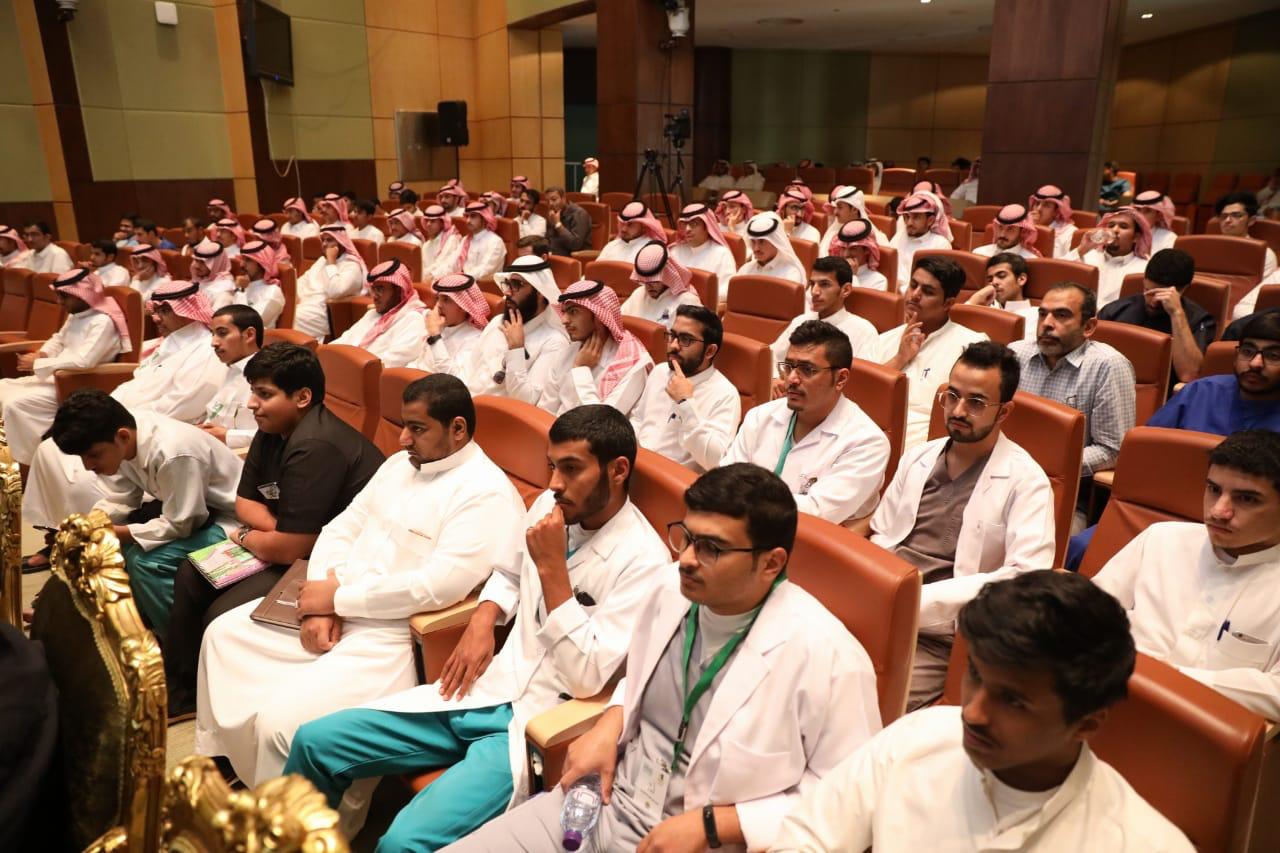
الهيئة العامة للإحصاء تختتم أسبوعها التوعوي لطلاب منطقة الجوف
More than 130 statistical products to support studies and research in the academic sector
GASTAT concludes its awareness week in Al-Jawf region
The General Authority for Statistics (GASTAT) stated that more than 130 statistical products are available for university students, faculty members, and researchers in the economic, social, environmental, cultural, humanitarian, demographic, and agricultural fields. These products will be available on GASTAT official website www.stats.gov.sa with open access, so that they may support the research activity in the Saudi academic sector.
During a lecture that was held on Thursday, Muharram 24, 1440H in Al-Jawf university, GASTAT spokesman, Taiseer Almofarrej said that GASTAT gave researchers, university students, and faculty members an attention by considering them clients who receive services for the purpose of supporting academic activity, as this activity is considered an important component of the statistical sector.
Almofarrej added, the university student has a significant role in raising awareness and interacting positively with statistics which represents the main concern of researchers and academics. Furthermore, the university student can disseminate knowledge among households and society in general, especially when speaking about his/her role in supporting statistical works that target households, as providing accurate and comprehensive data by the household head is an important step of the statistical process that supports developmental plans and programs.
Meeting the university students and faculty members was the last event in the awareness week of GASTAT in Al-Jawf region which was held during the period 20-24 Muharram, 1440H (30 September- 4 October 2018). It is worth mentioning that this awareness week is one of the many statistical awareness programs that GASTAT conducts to raise awareness among all society classes. However, during this week, Al-Jawf university hosted the event of (We share you your academic journey) which targets university students, faculty members, and all university staff. This event presents GASTAT statistical products and services, and explains how to use them to conduct academic studies and research.
On the other hand, more than 560 students representing 70 elementary and intermediate schools visited the “Smart statistician” exhibition which was held in Skaka. The exhibition was organized by GASTAT in cooperation with the General Administration of Education in Al-Jawf region. It aims at clarifying the role of statistics in the life of students, in addition to explaining the statistical concepts and raising the level of students’ awareness. Moreover, it presents the statistical process steps and stages in a simple and scientific way, and enhances the student’s realization of the statistician role. However, the exhibition demonstrates the impact of data accuracy (data provided by the household head) on development, as the student is considered an effective method in raising households’ awareness. The awareness week also included an interactive lecture that was held in Domat Al-Jandal governorate and attended by more than 200 students from different schools.
It is noteworthy that GASTAT, in cooperation with different departments of education, works hardly to educate students with the impact of statistics on development, in addition to the impact of student- either school students or university students- on raising his/her household awareness to provide GASTAT with required data and information over the year.

الهيئة العامة للإحصاء تُجْرِي 9 مسوح ميدانية تستمر حتى مطلع ربيع الثاني1440هـ
Targeting 190,000 households and 40,000 Establishments
GASTAT Conducts 9 Field Surveys that Continue Until the Beginning Of Rabi’ Al-Thani 1440H.
The General Authority for Statistics (GASTAT) called upon all citizens and residents, as individuals or in corporations, to cooperate with the statisticians working in the field in various regions of the Kingdom of Saudi Arabia, who their statistical work will continue until the beginning of Rabi’ Al-Thani 1440H. GASTAT asserted that all information and data will be treated as an information basis which is reliable and can be used by development decision-makers in all relevant government entities that will serve the interest of citizens and residents.
GASTAT spokesman, Mr. Taiseer Almofarrej said that about 3437 statisticians are conducting 9 social and economic field surveys during this period and until the beginning of Rabi’ Al-Thani 1440H. These surveys target about 190,000 households and 40,000 establishments in all (13) administrative regions, including cities and governorate. The results of these surveys are one of the most important pillars when taking decisions that are relevant. The households will be visited in the areas designated to conduct the Household Heath Survey, Food and Drugs Survey, Non-profit Sector Survey (Household), Labor Force Survey, Umrah Survey, estimate of Makkah pilgrims survey, Household Culture and Entertainment Survey, Use of Time Survey and household Economic Survey.
He added that the Household Health Survey for the fourth quarter of 2018 aims to provide data to help health planners to develop, update and follow up the implementation of some health policies and strategies. In addition, it provides data enabling decision makers and health policy makers to conduct regional and international comparisons to develop the health field in Saudi Arabia to Standards, as well as creating a database that can be used as a reliable basis in providing local, regional and international organizations with health information and indicators. Furthermore, it provides accurate data to help monitor the implementation of and assess the impact of certain health programs, such as, programs related to chronic diseases, lifestyles and child mortality, as well as provide accurate data that help identify the disadvantaged groups, and thus contribute to targeting these categories with relevant strategic health initiatives and programs.
In the field of economic statistical surveys, the official spokesman of GASTAT said that the surveys will be conducted on the non-profit sector (households and establishments) in order to identify the size of this sector in reality and its contribution to the Saudi National Product. In addition, it measures the contribution of the community members in volunteer work, and aims at measuring the perceptions of the community members for the role of voluntary organizations and their final outputs in supporting development plans, and supporting decision makers and planners in the process of maximizing the outputs of the non-profit activity helping in achieving the Saudi Arabia’s 2030 Vision seeking to increase the contribution of the charitable sector to the GDP and to increase the number of volunteers.
The Food and Drug Survey aims at identifying data on the quality of medicines in houses, in addition to providing data on the storage and disposal of medicines, as well as the extraction of health indicators of the drugs to meet the local, regional and international requirements in this field. All these field surveys aims at providing accurate and detailed data that helps to know the growth rates of the economic and social activities in Saudi Arabia.
On the other hand, Almofarrej clarified that the general statistics system issued by the ministers’ cabinet, states that all data and information provided by any citizen, resident, or establishment are kept and dealt with confidentiality. He added that the people’s cooperation with statisticians would guarantee the success of these works, and using them in supporting economic and social development accordingly.
It is worth mentioning that GASTAT carries out a large number of field surveys throughout the year, following the international standards adopted in the selection of the sample for these statistical works. It is required that the sample is representative of the society studied and include its characteristics, so that the results are circulated as official statistics. GASTAT immediately publish the surveys after the completion through its official website www.stats.gov.sa
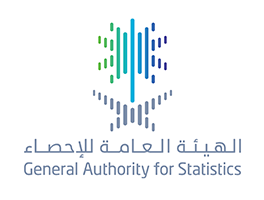
الهيئة العامة للإحصاء: ارتفاع الناتج المحلي بالأسعار الجارية 17.76٪
Based on the second-quarter National Account Indicators Report 2018
GASTAT: GDP rose by 17.76% at current prices
On Sunday 20 Muhrim 1440H / 30 September 2018, GASTAT released National Accounts Indicators Report for the 2nd quarter of 2018 on its official website www.stats.gov.sa The report showed an increase of 17.76% in Saudi Arabia’s GDP at current prices during the 2nd quarter of 2018 compared with the same period last year. The contribution of oil sector to GDP soared to 44.02% at current prices and 1.33% at constant prices compared with the same period in 2017.
Government sector’s contribution to GDP at current prices hit 18.01% and 4.01% at constant prices compared with the second quarter of 2017.
During the second quarter of 2018, private sector recorded an increase of 3.95% at current prices and 1.79% at constant prices, report added.
National Accounts Indicators Bulletin is issued by GASTAT on a quarterly basis and includes tables of GDP by economic activities and regulatory sectors at current and constant prices as well as the contribution of the regulatory sectors and the economic activities, government consumption expenditure, private consumption expenditure, capital formation, exports and imports.
